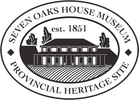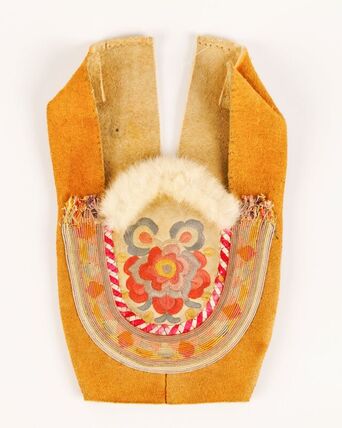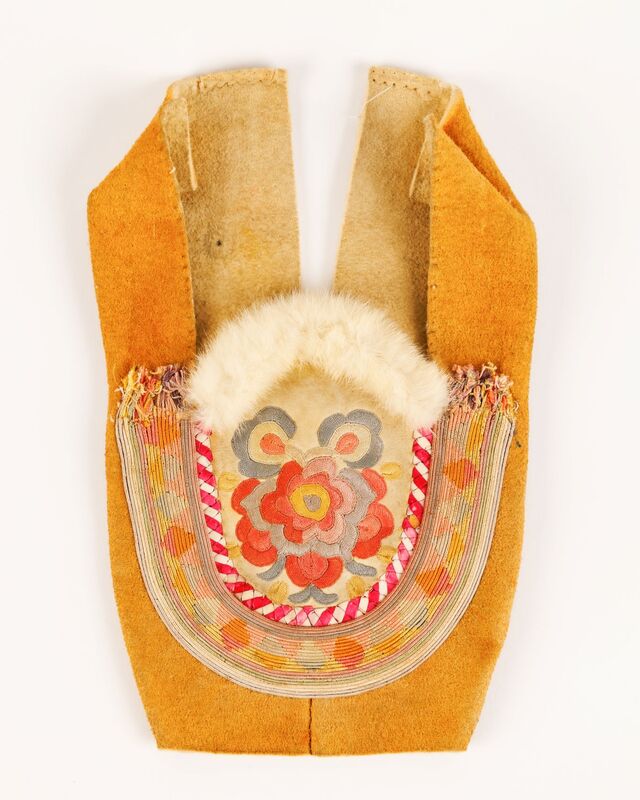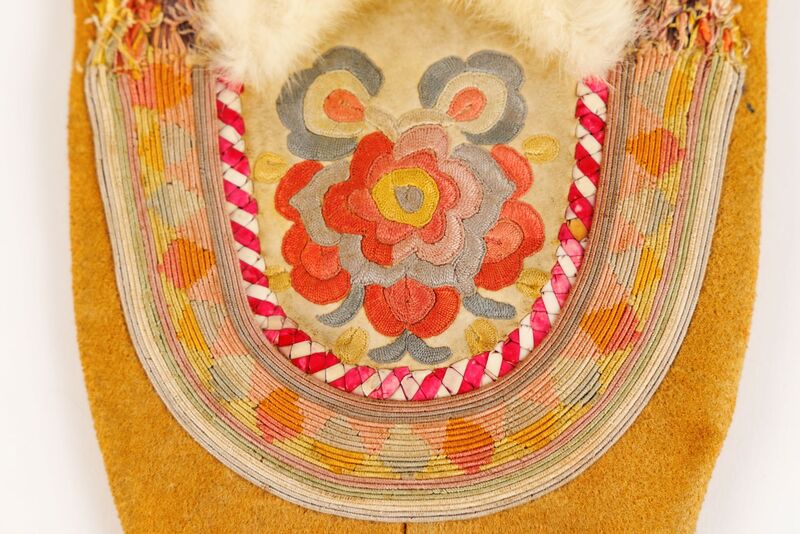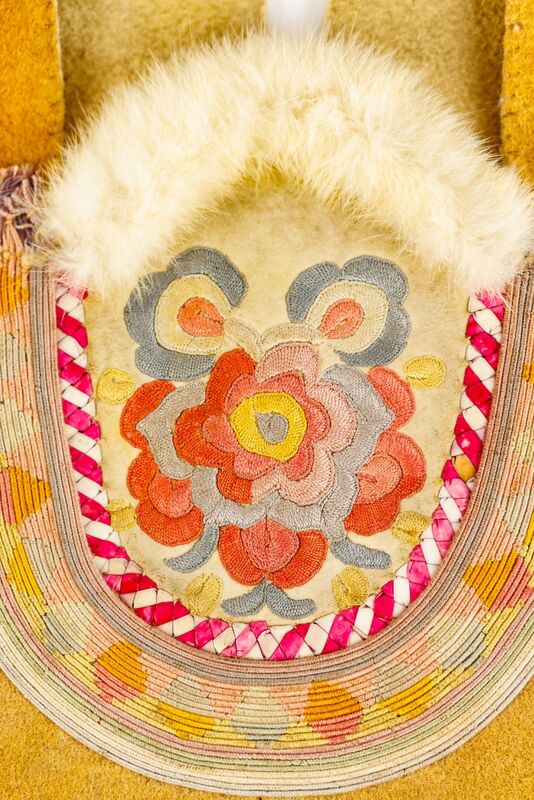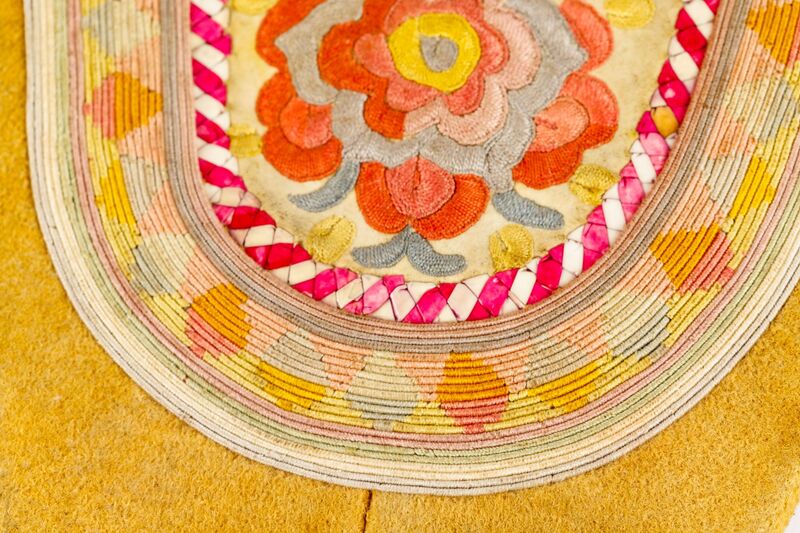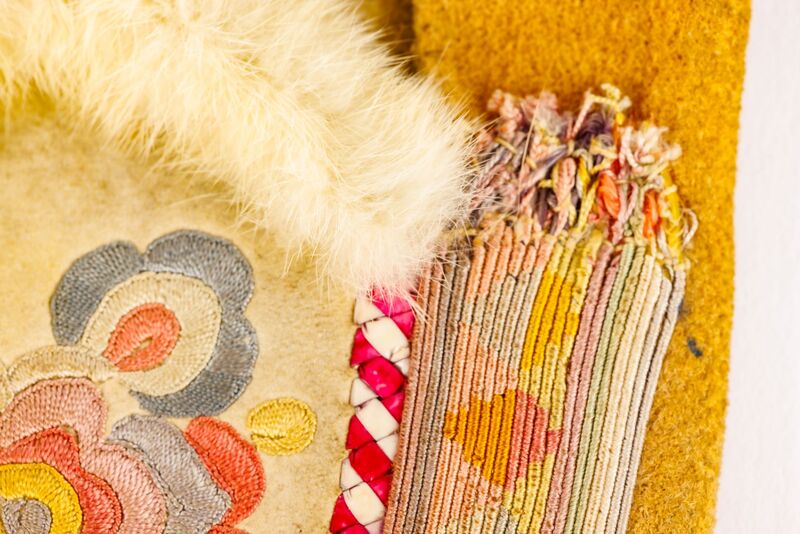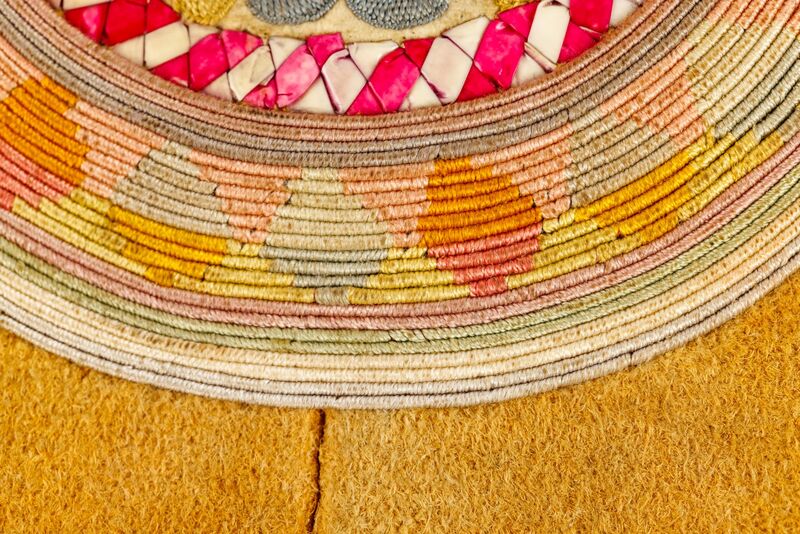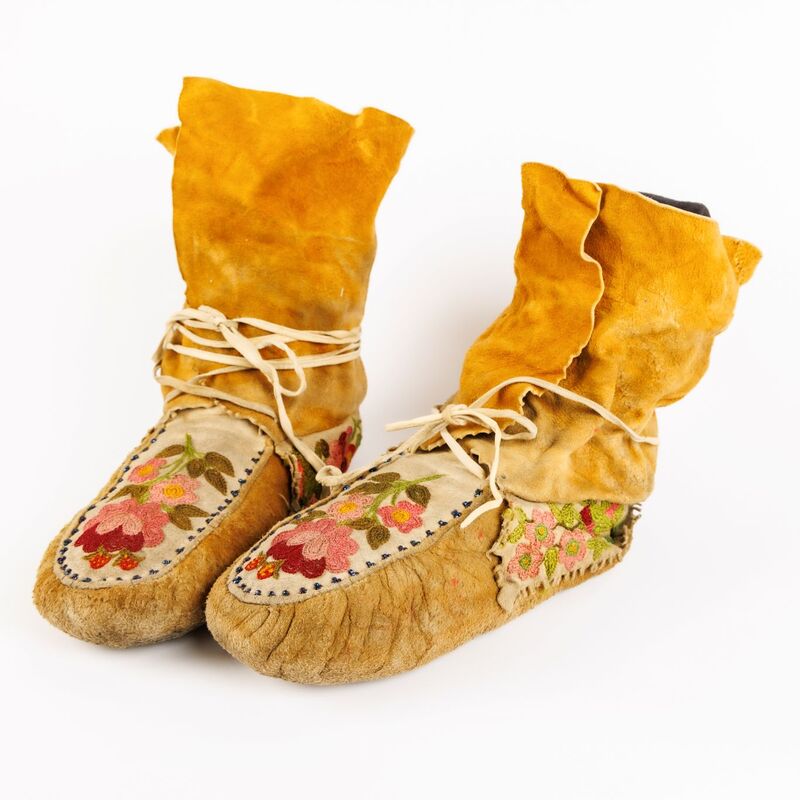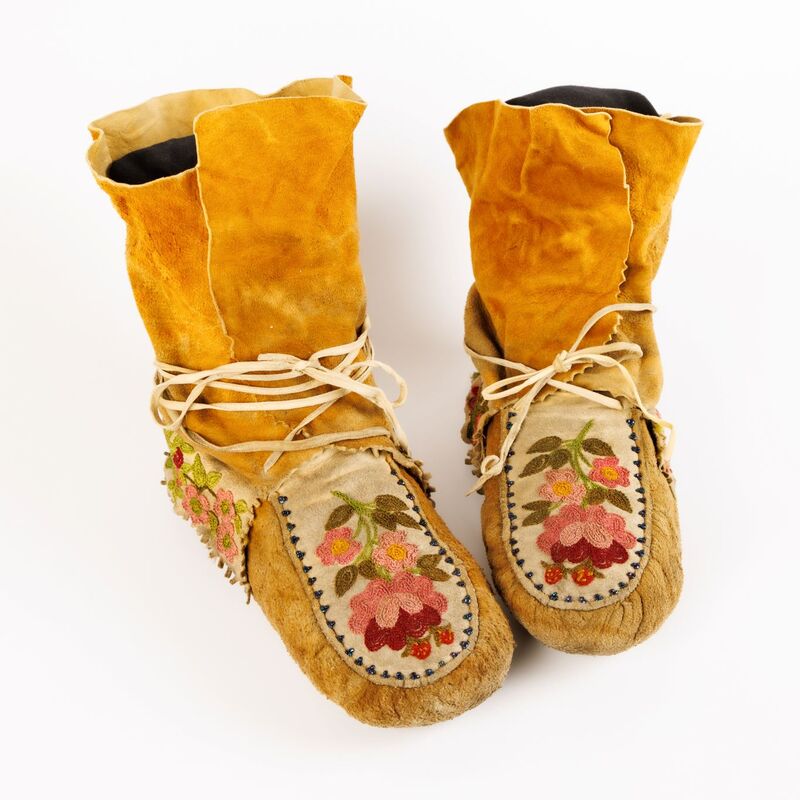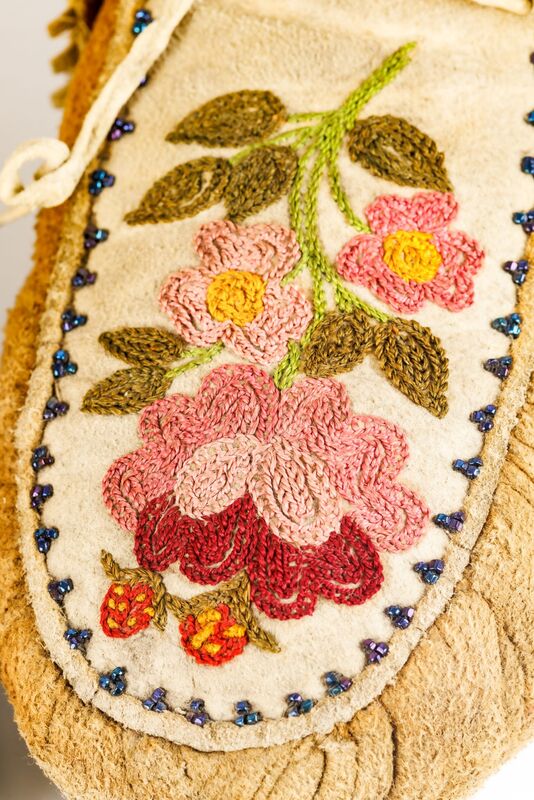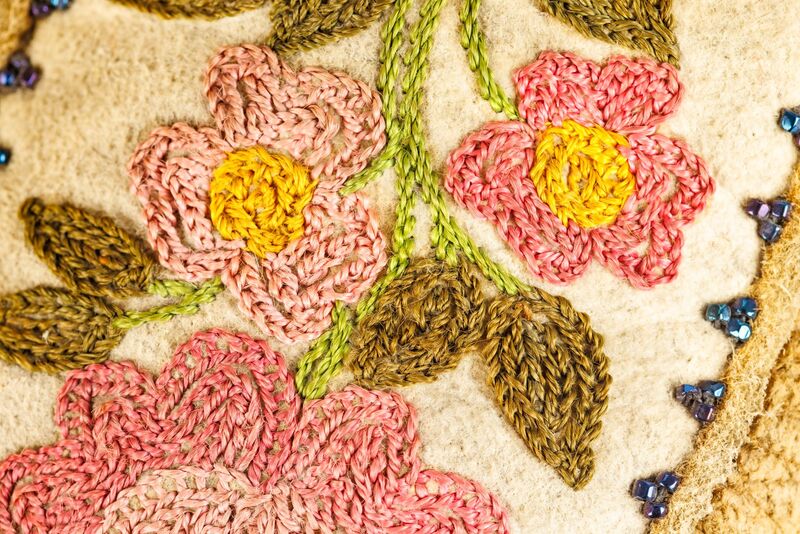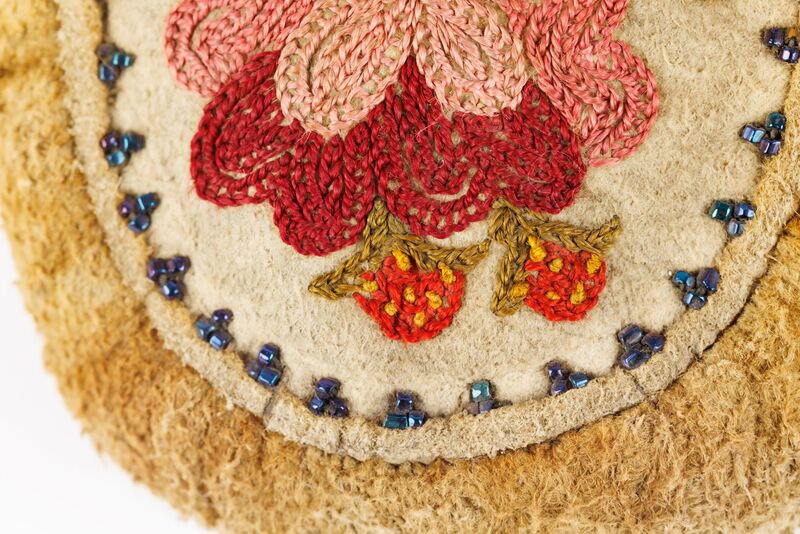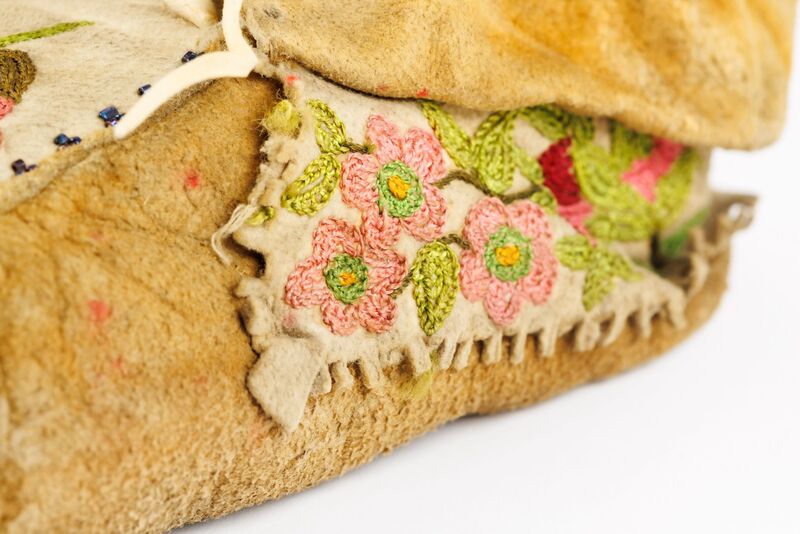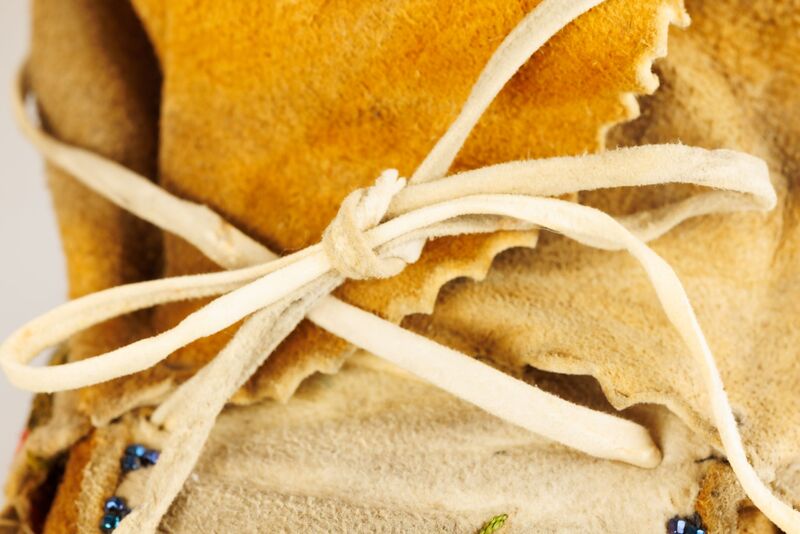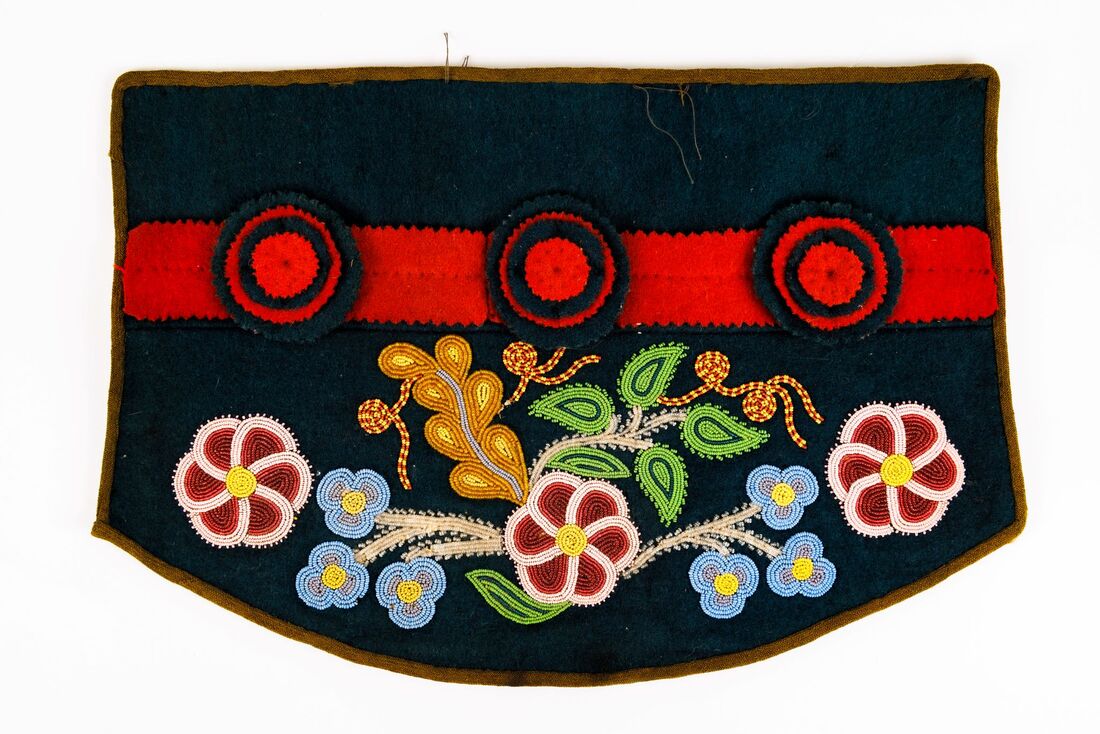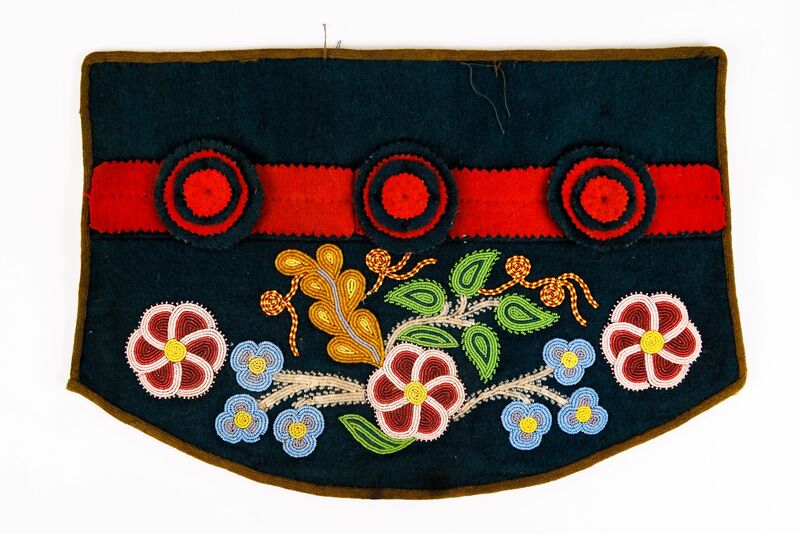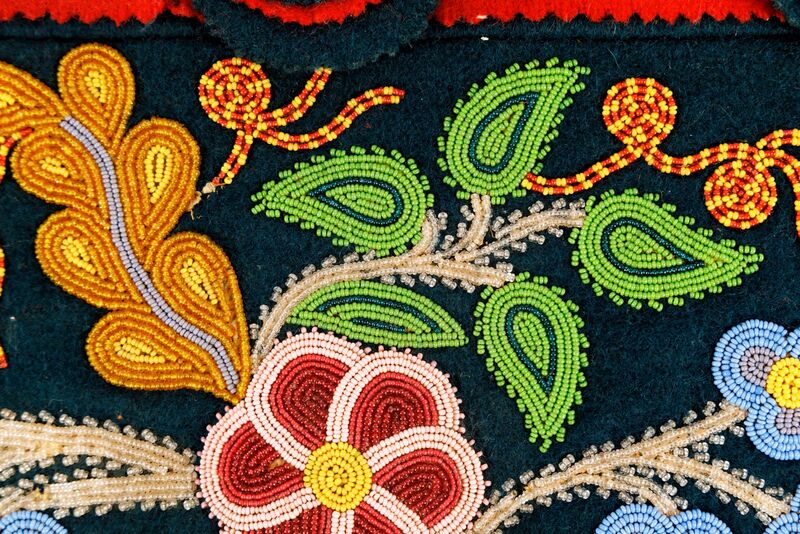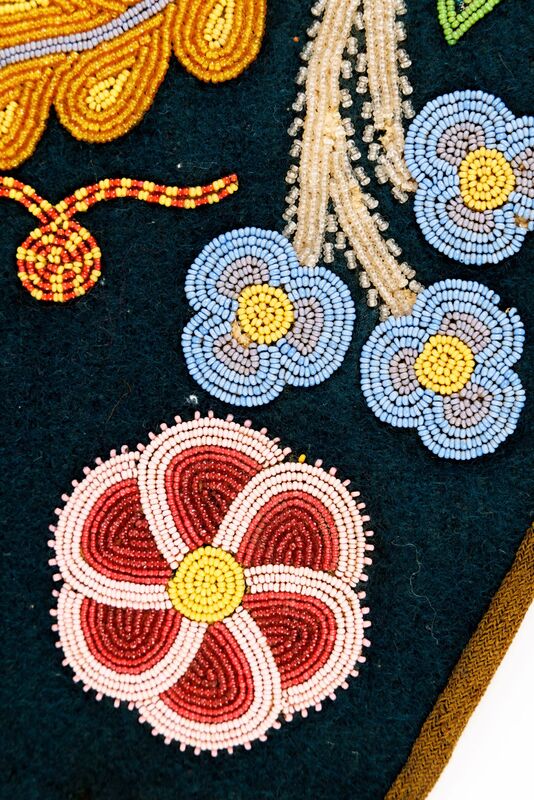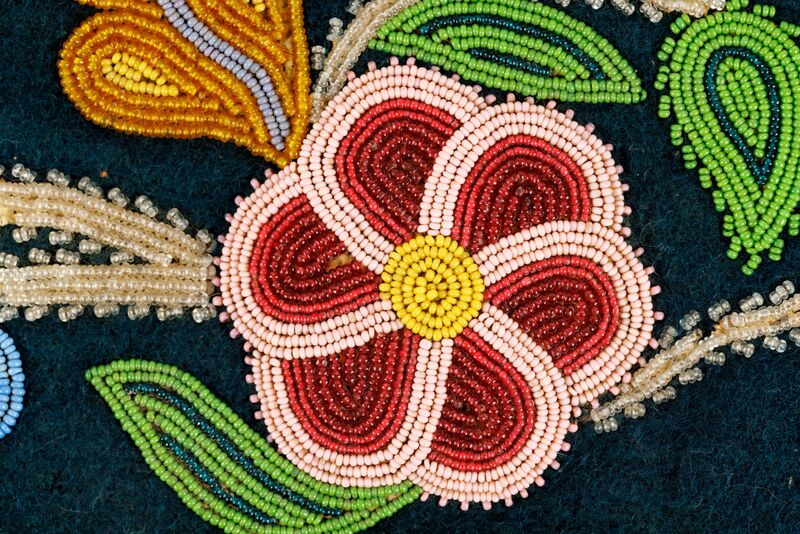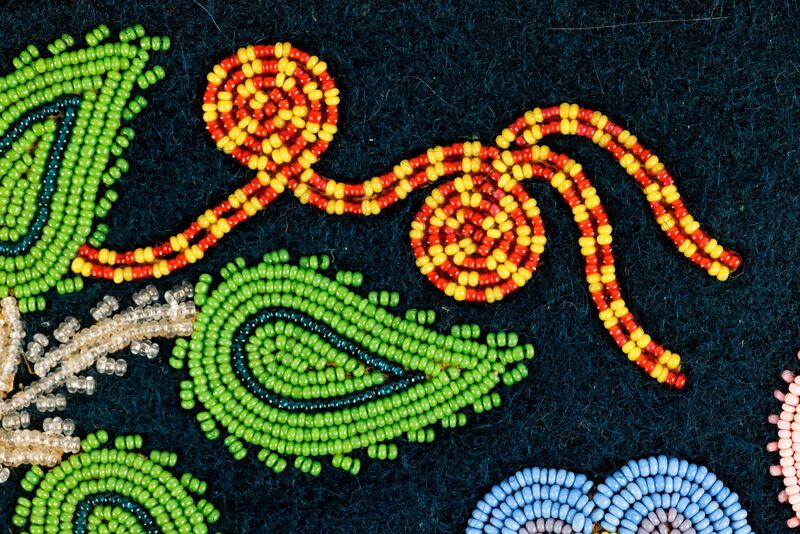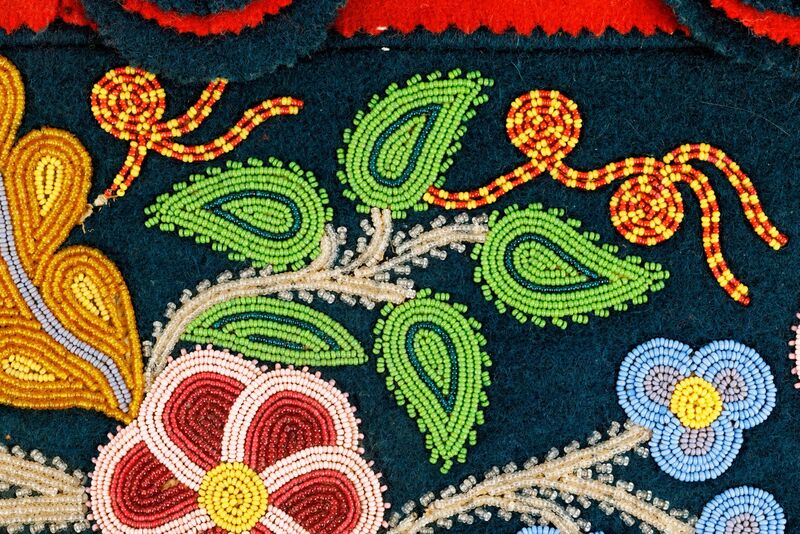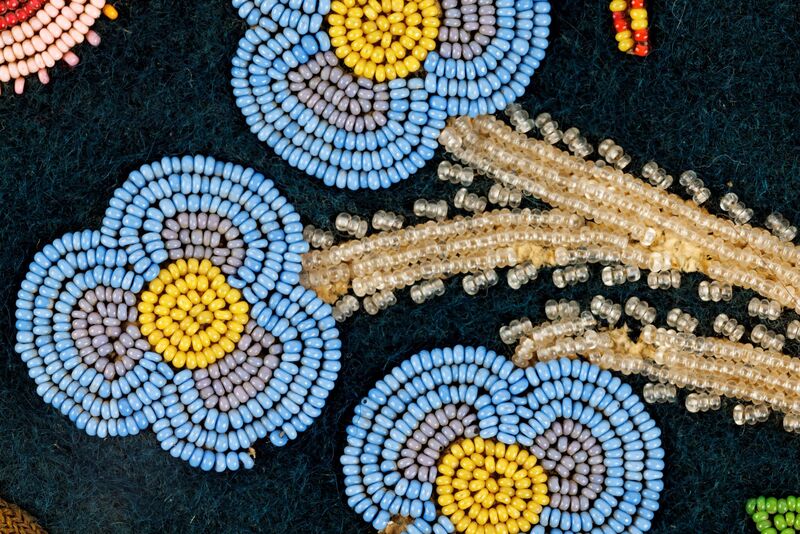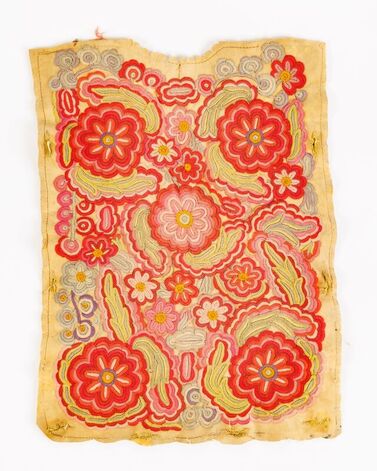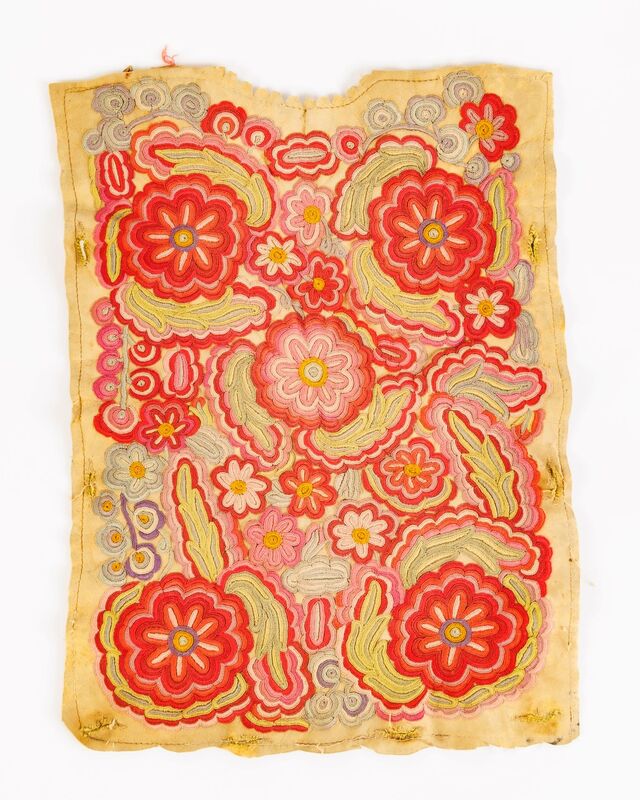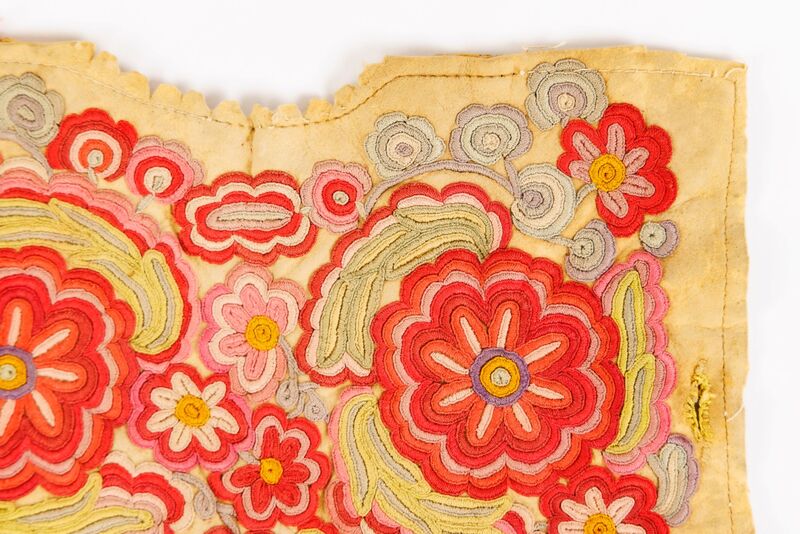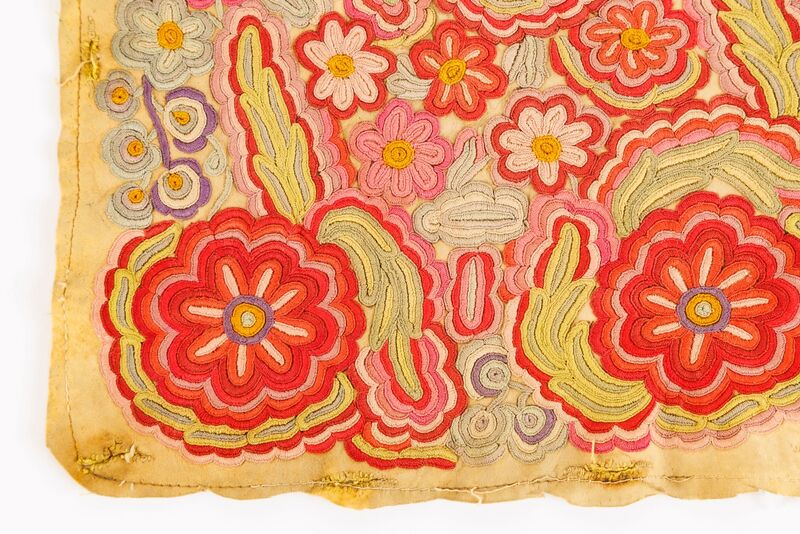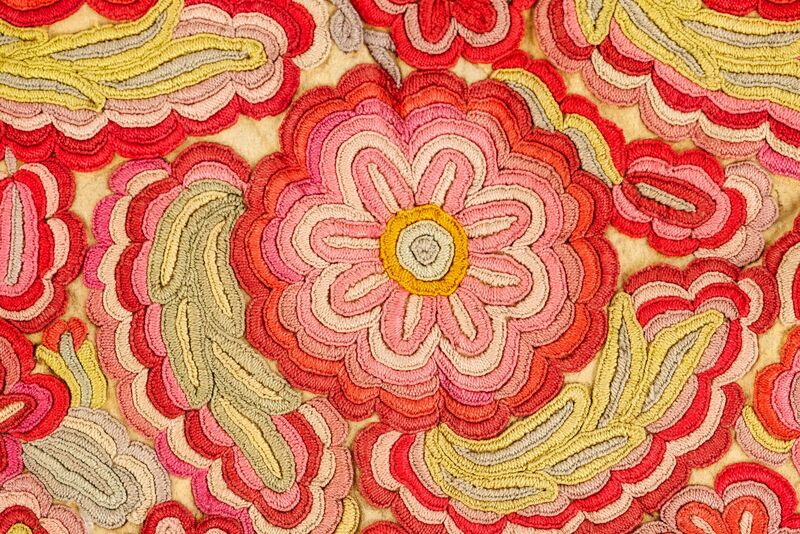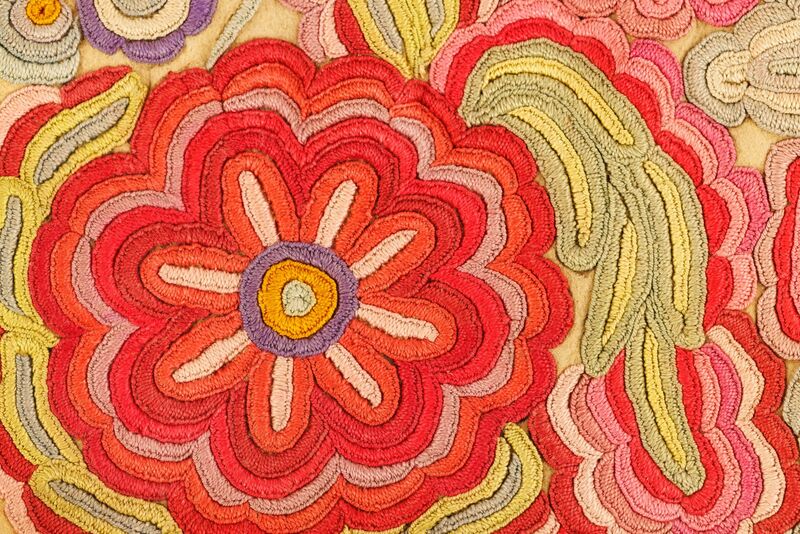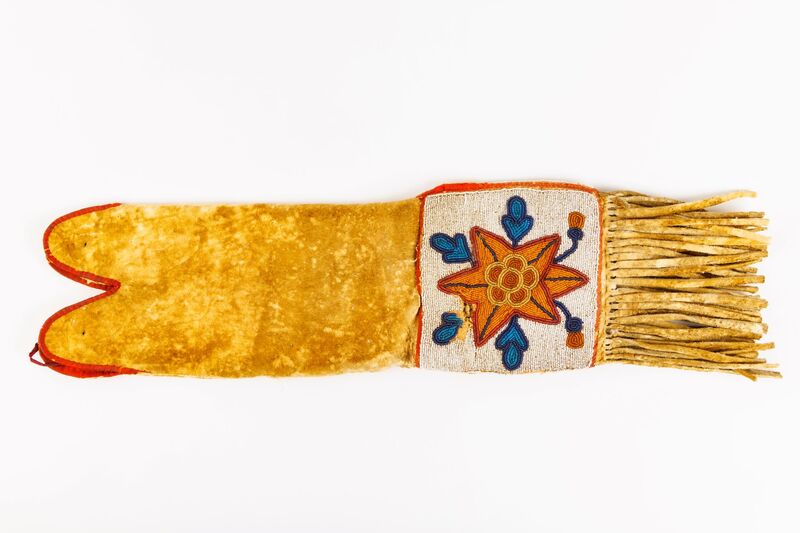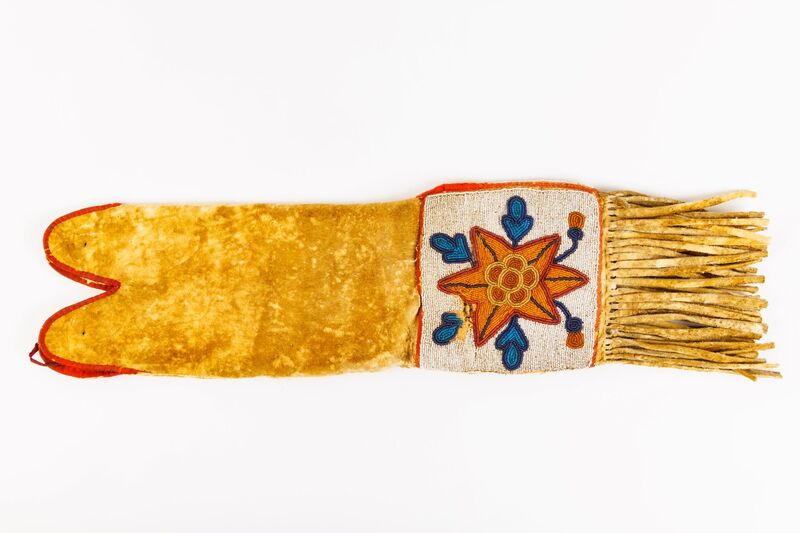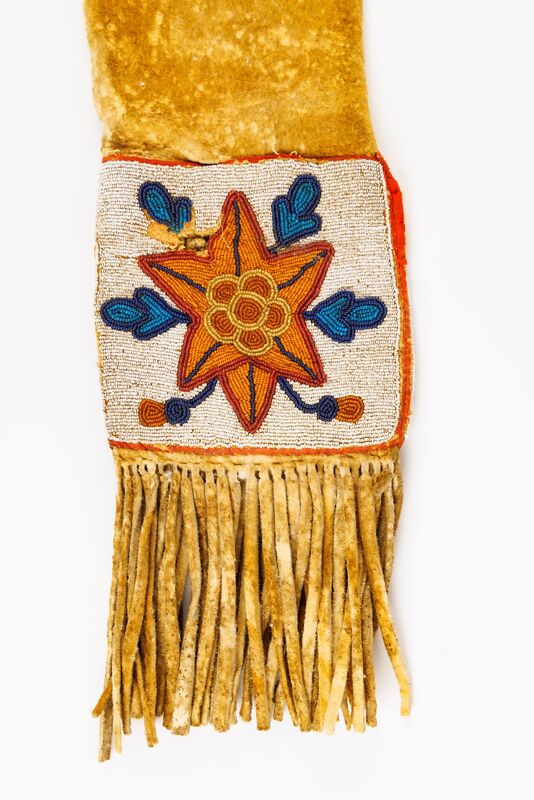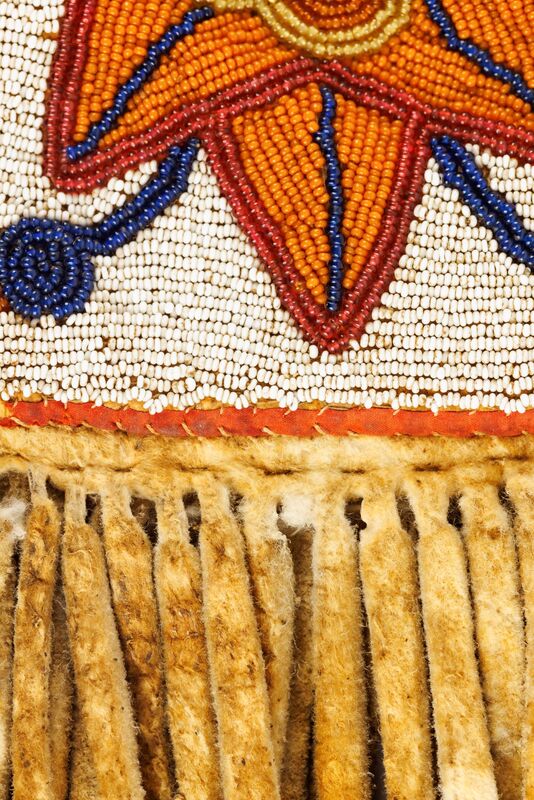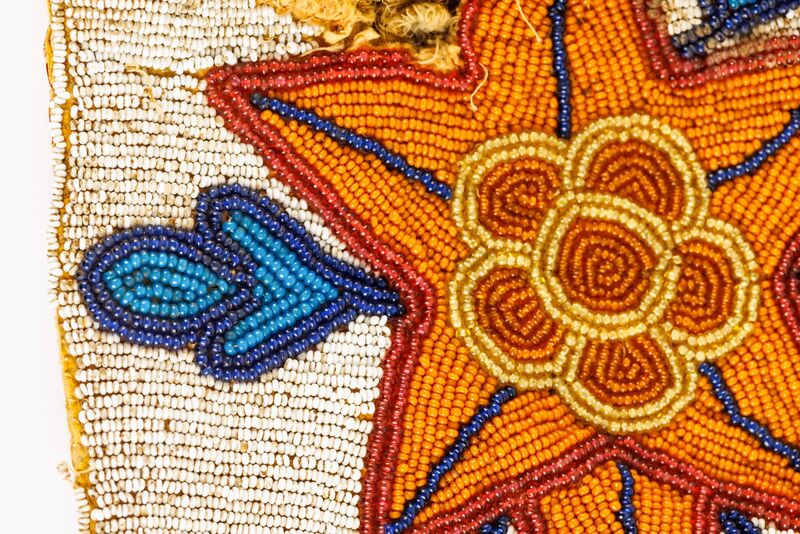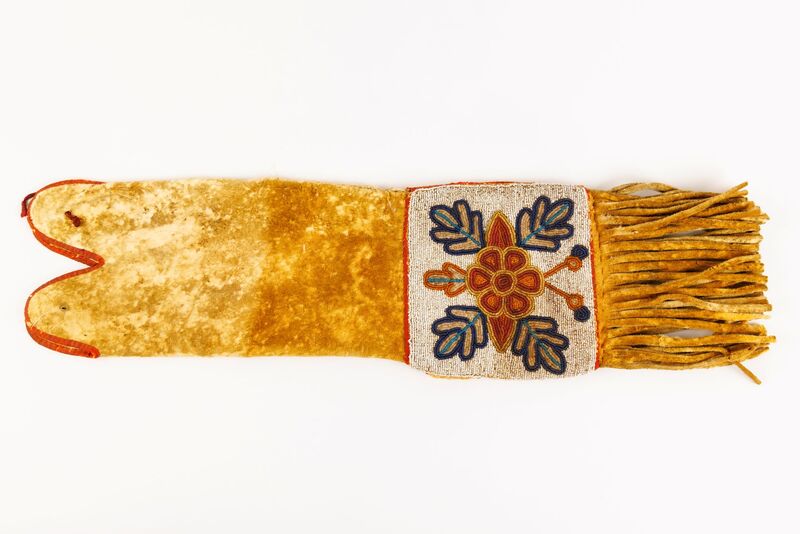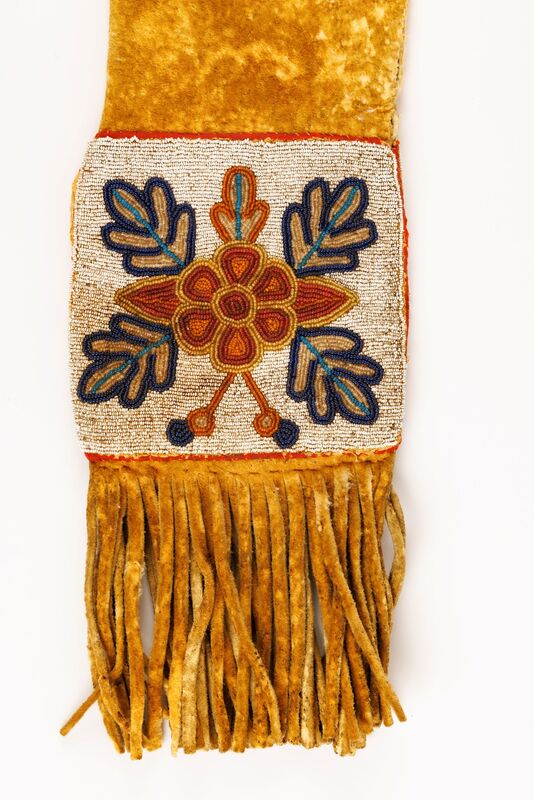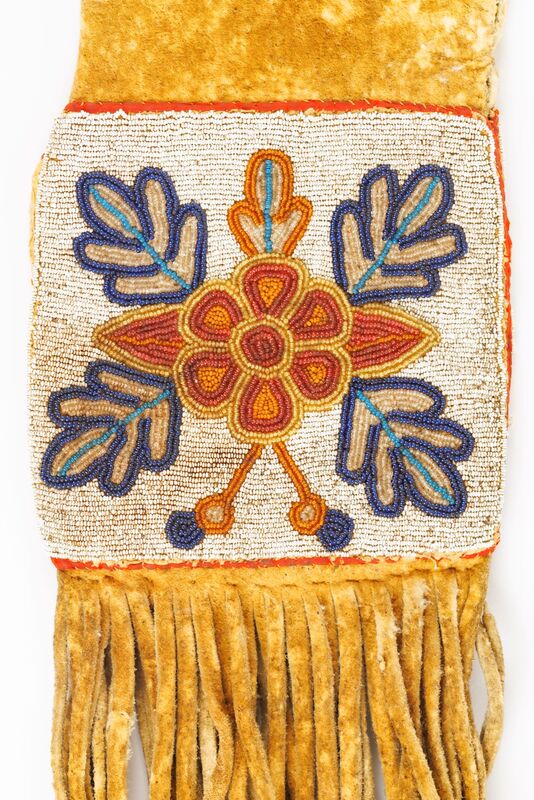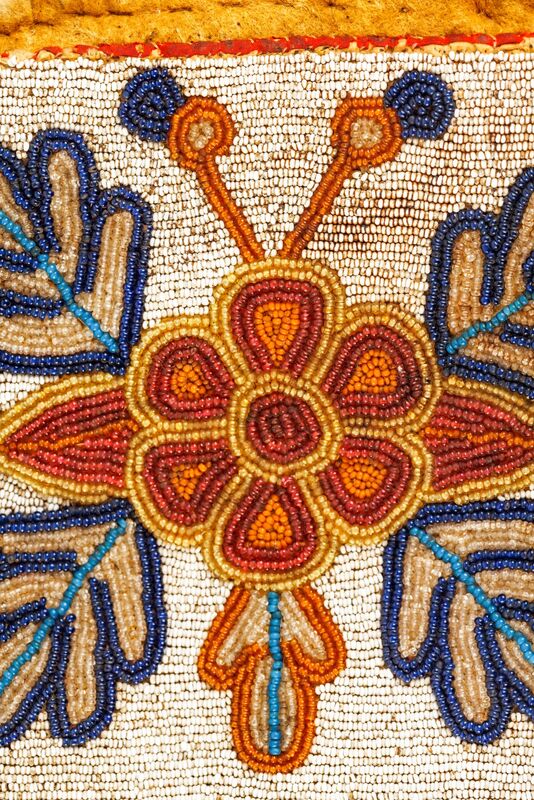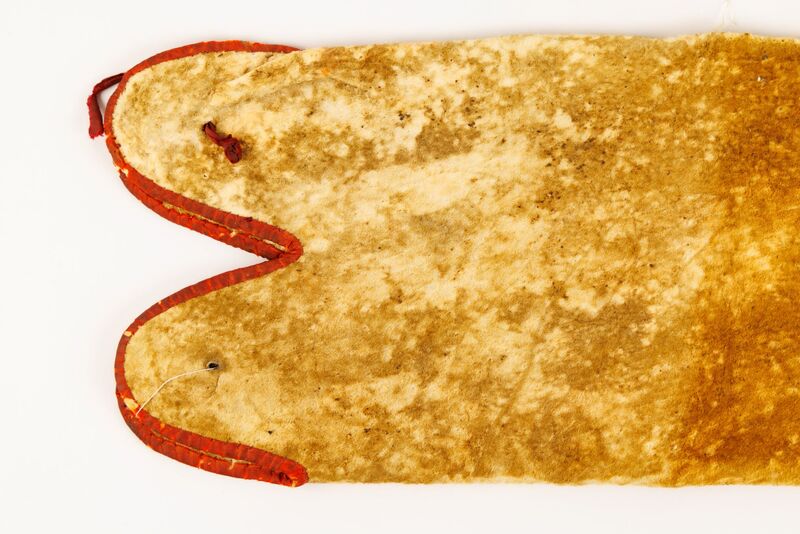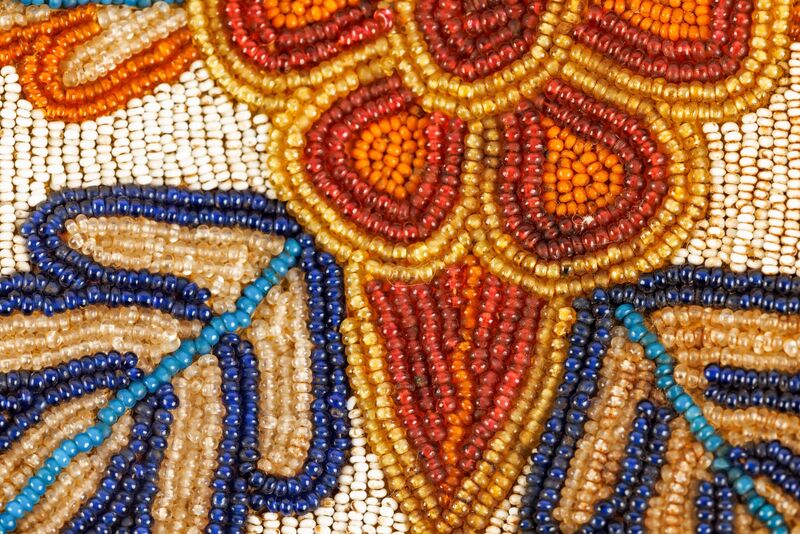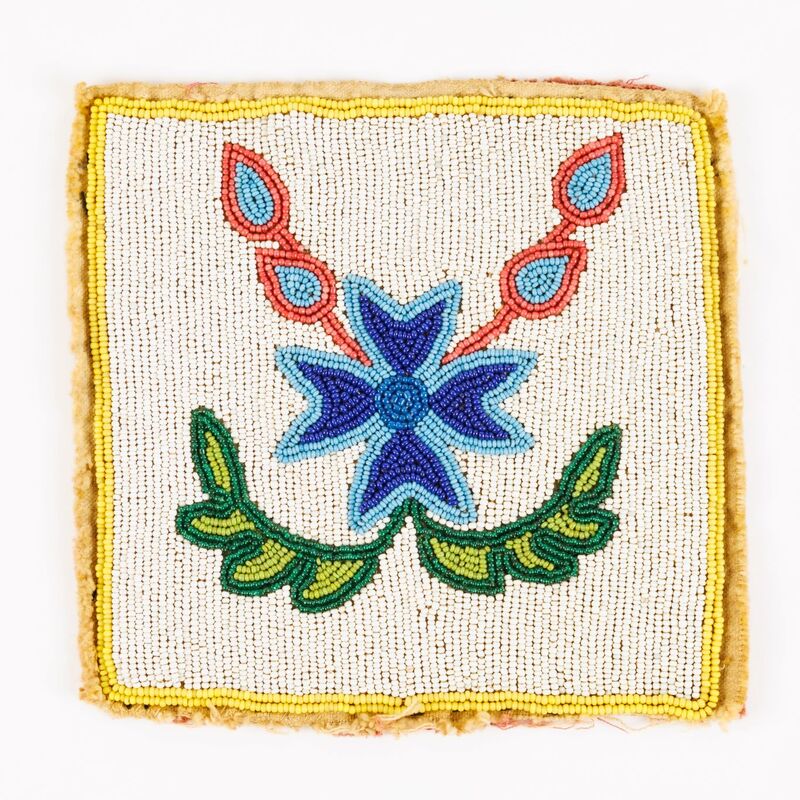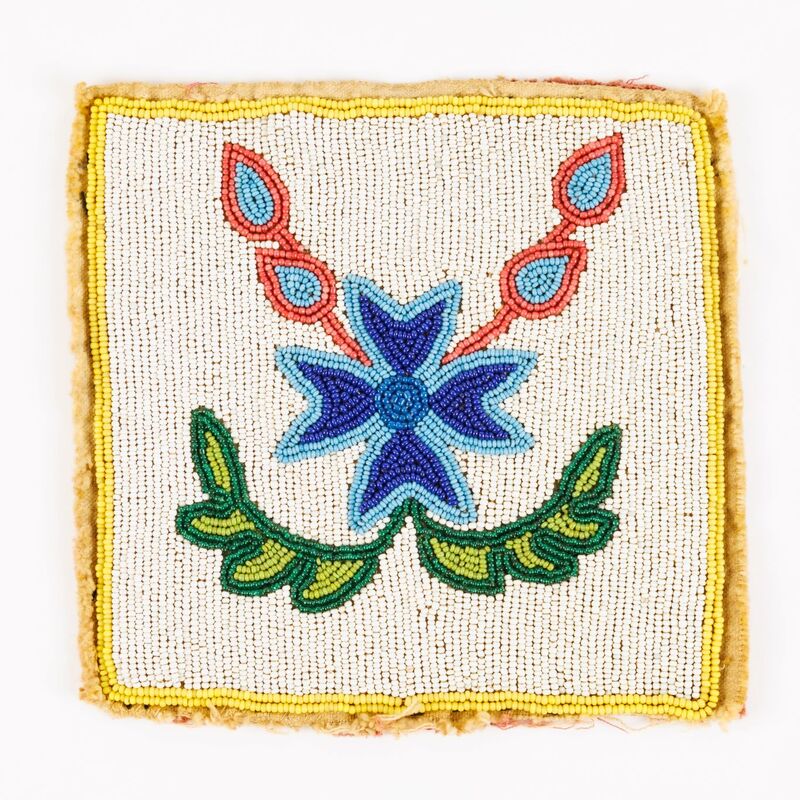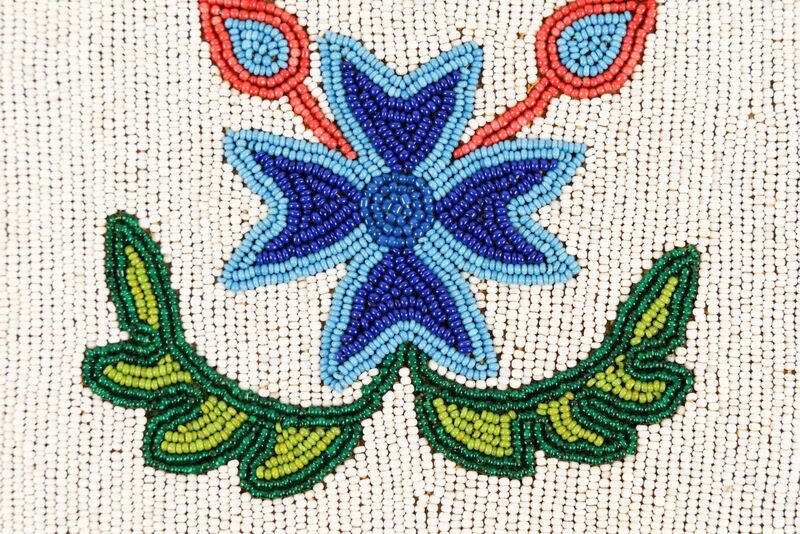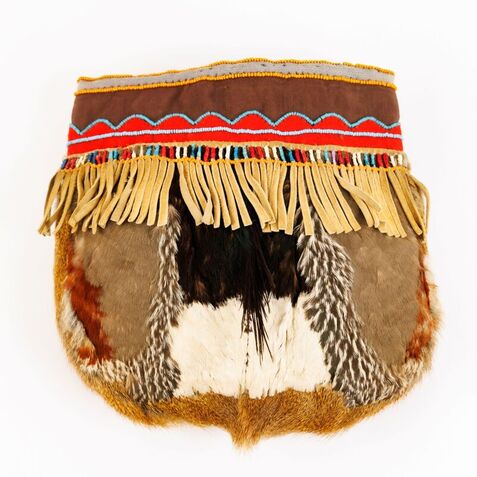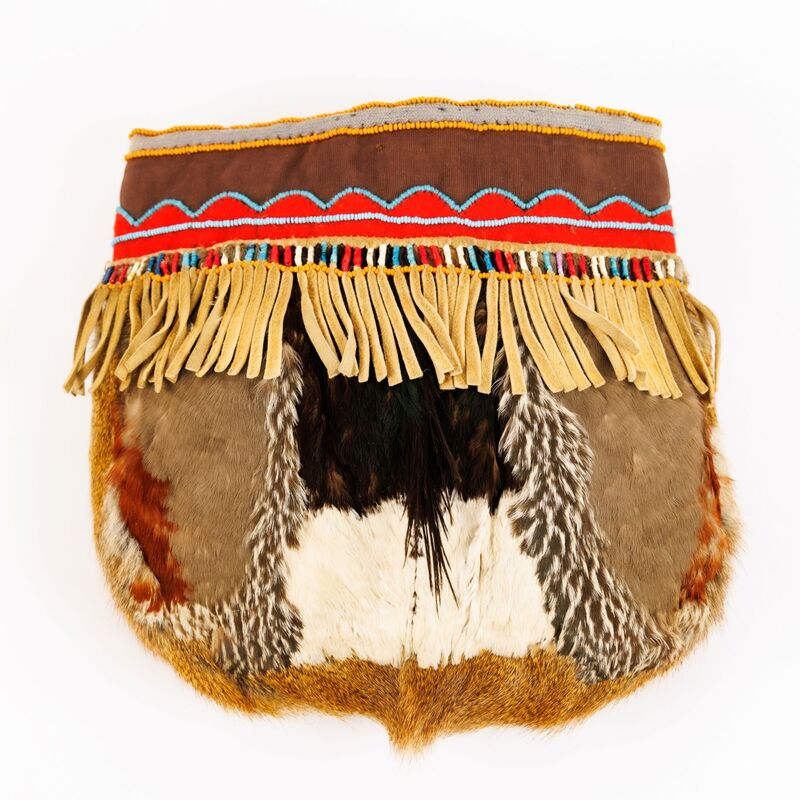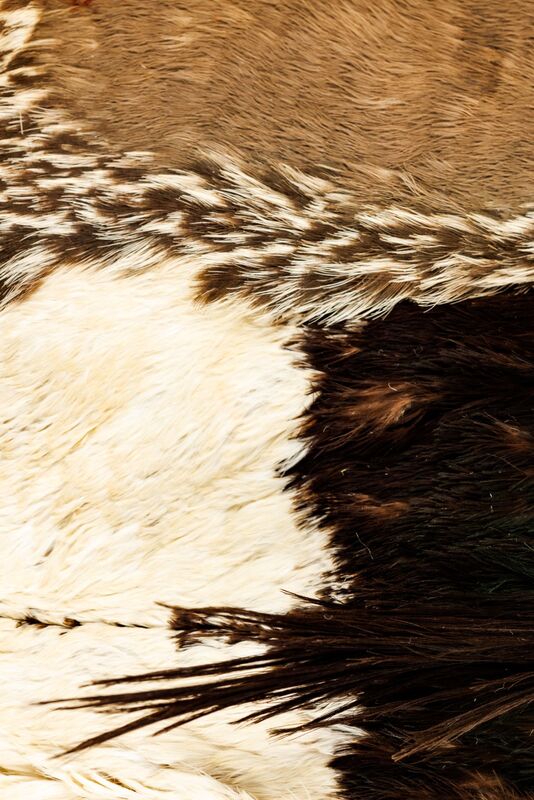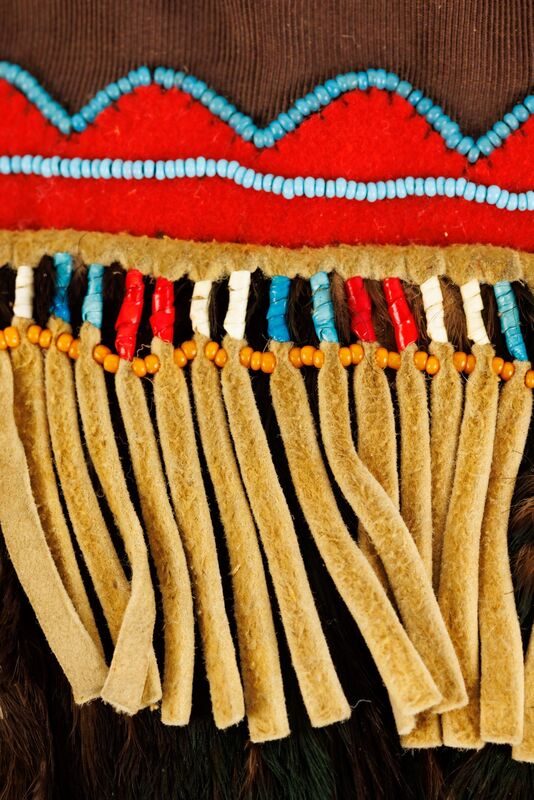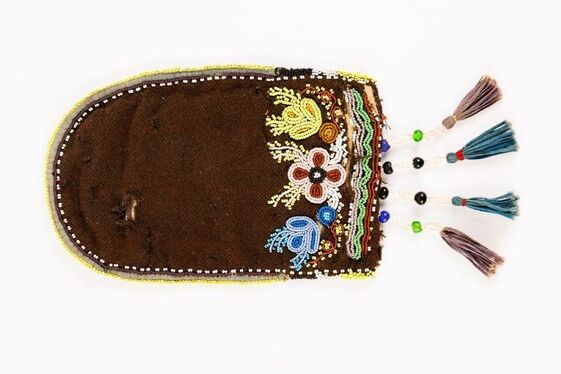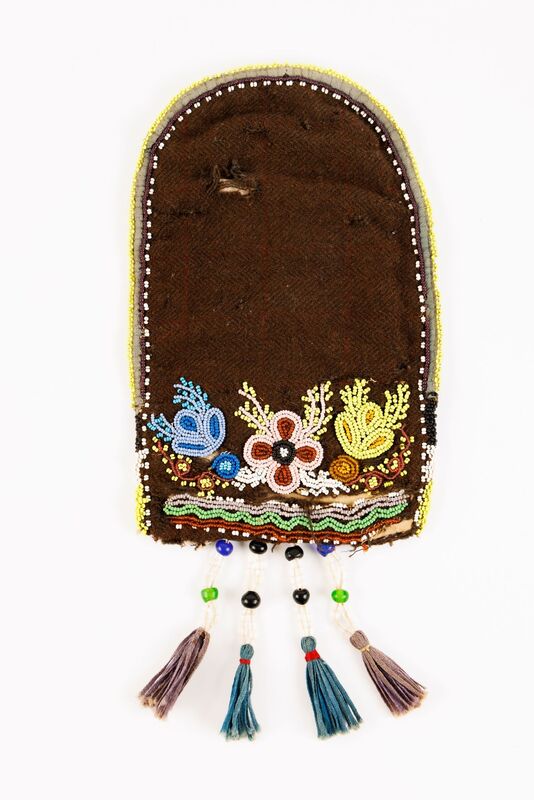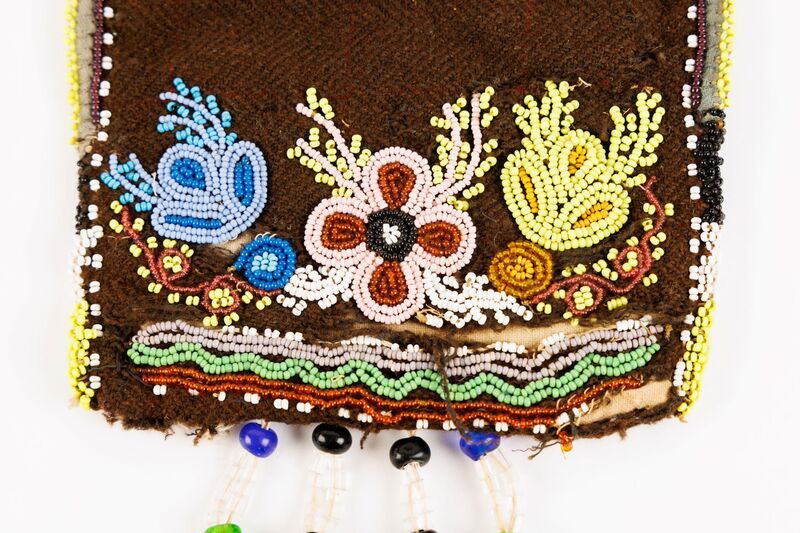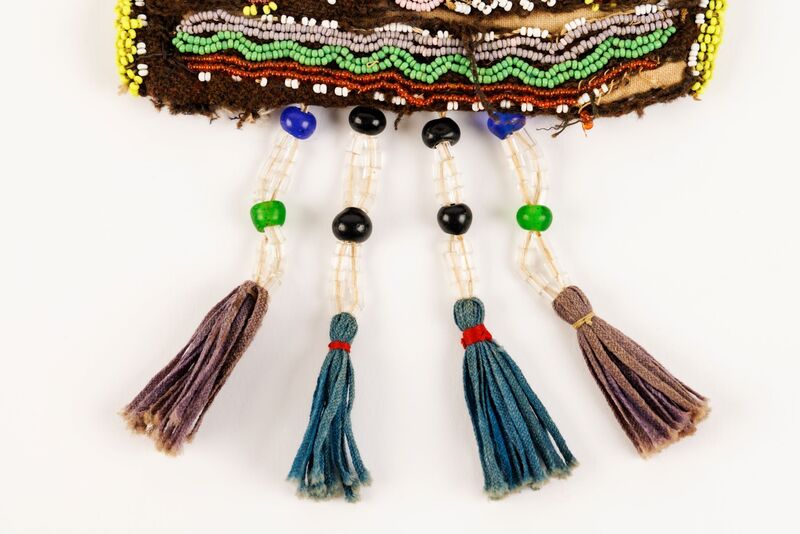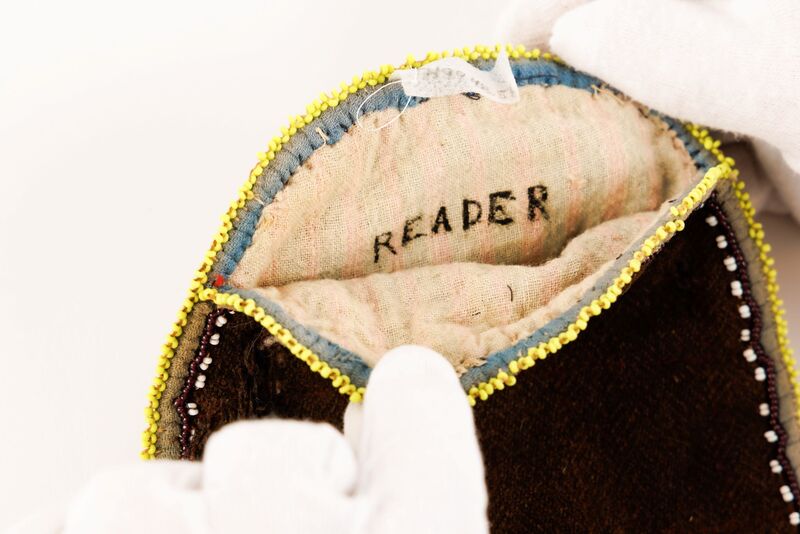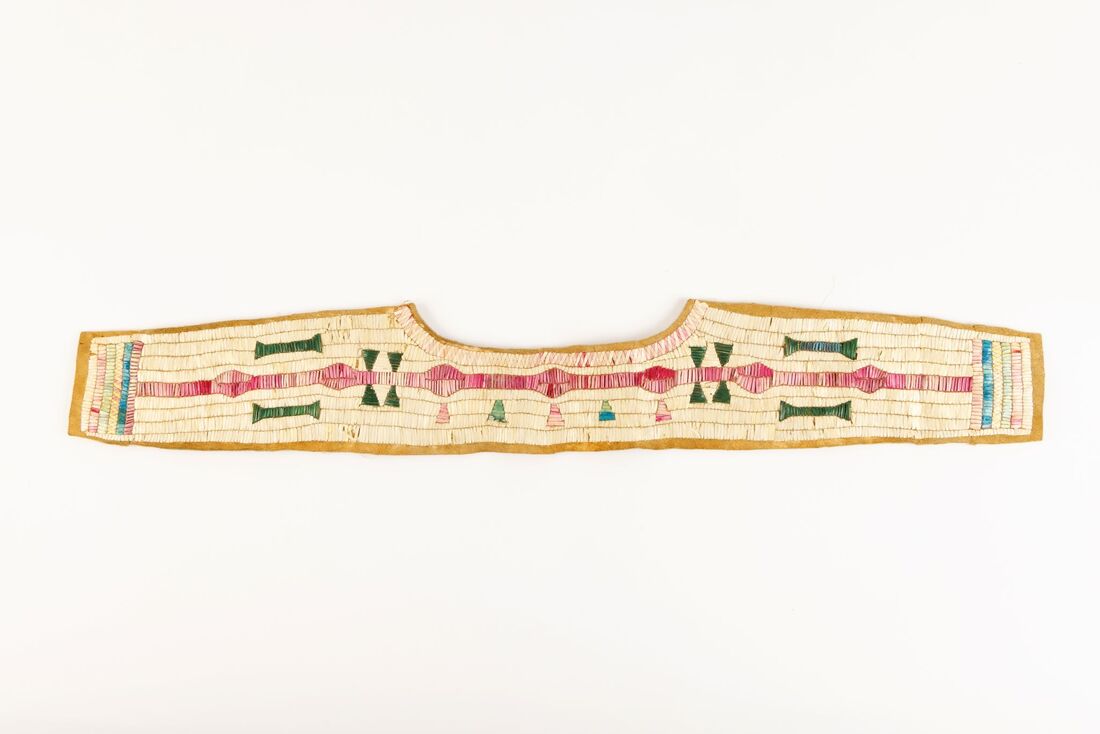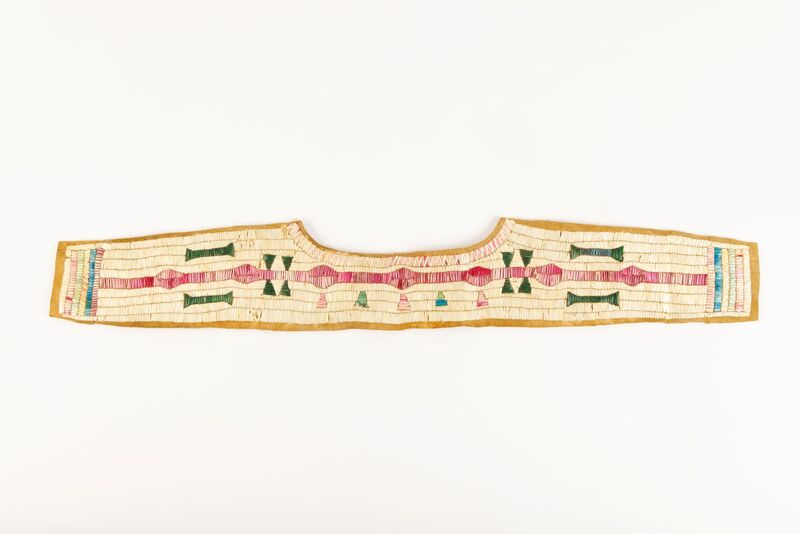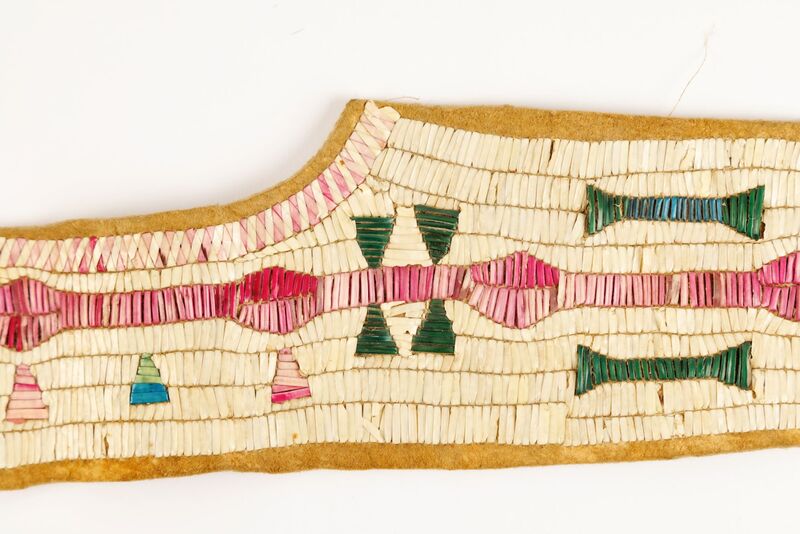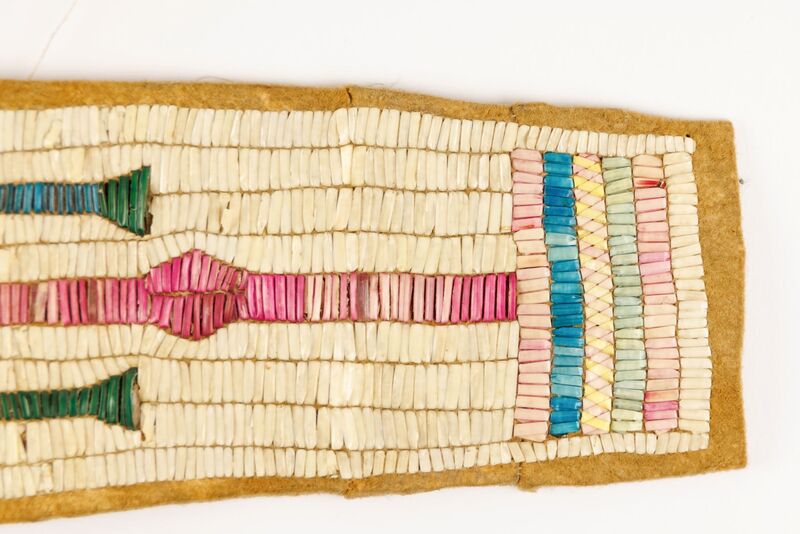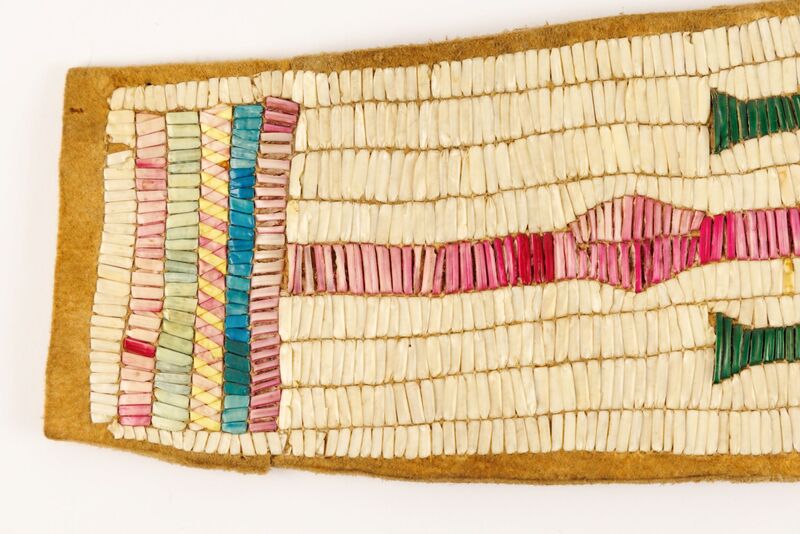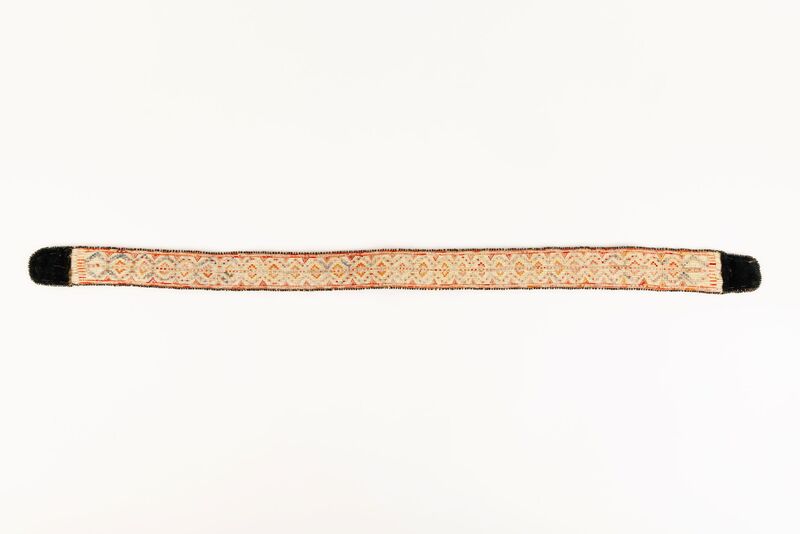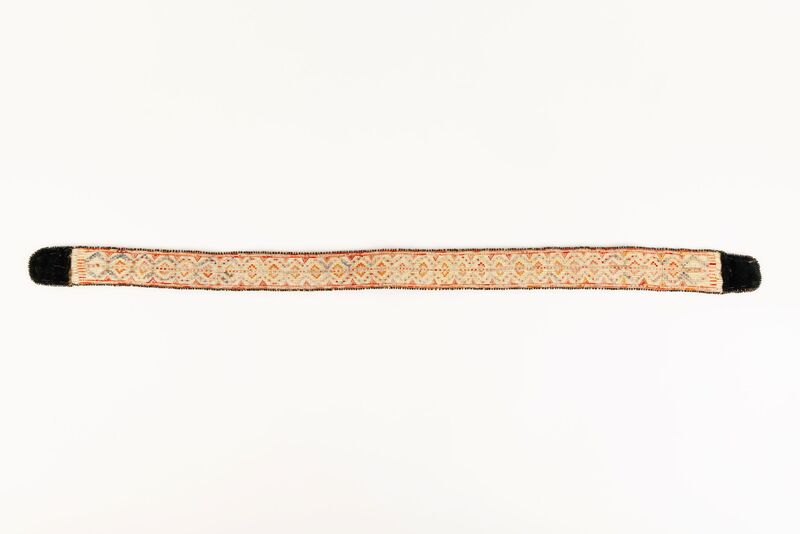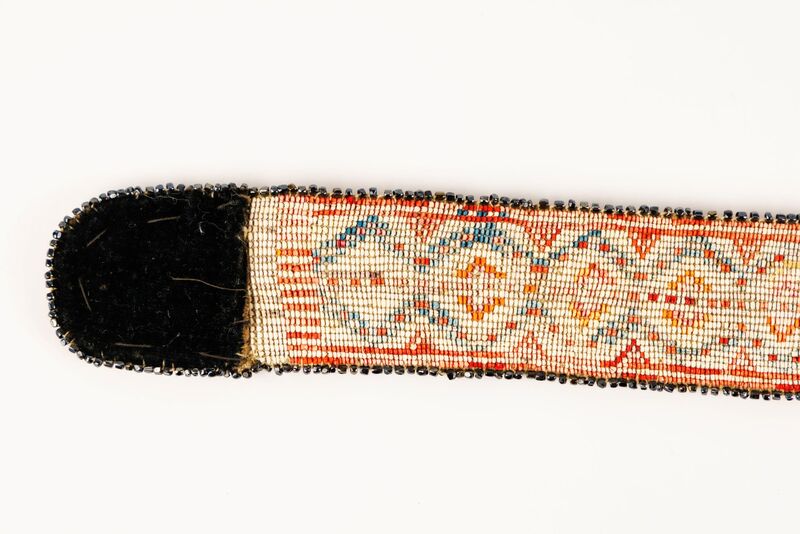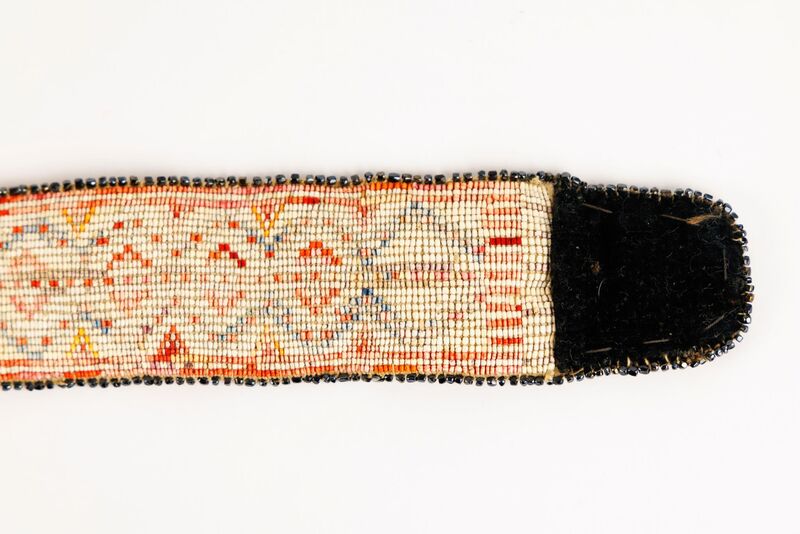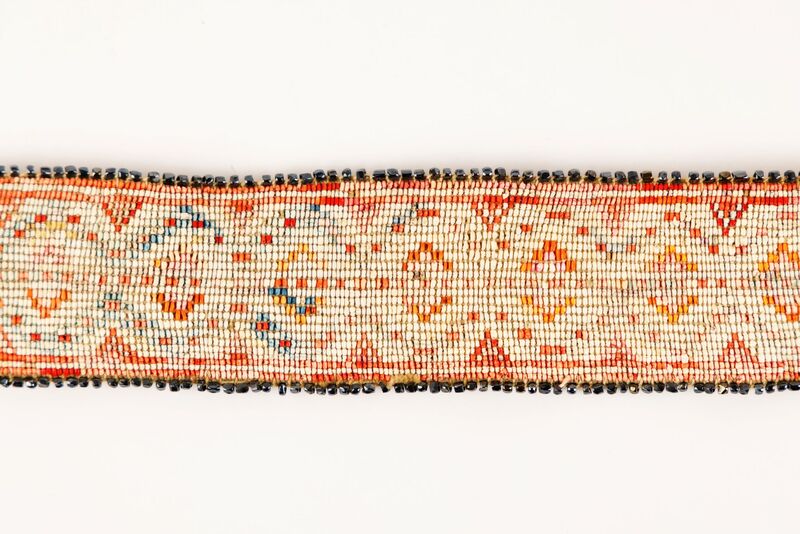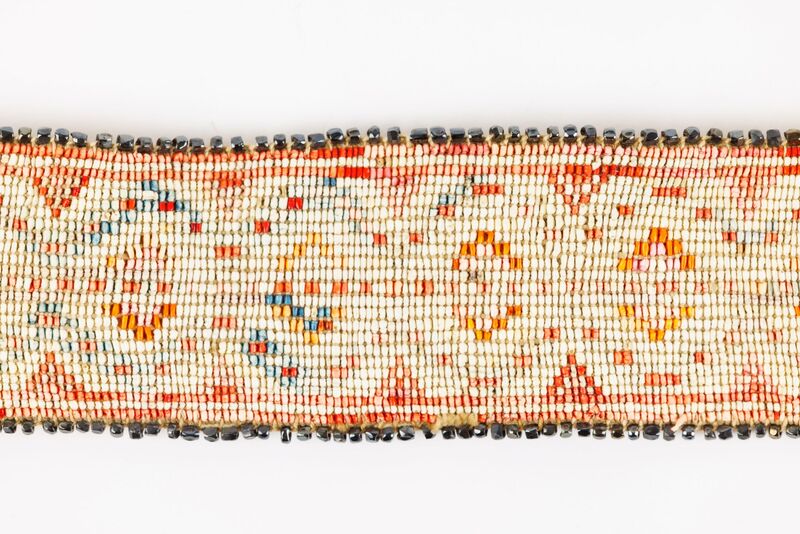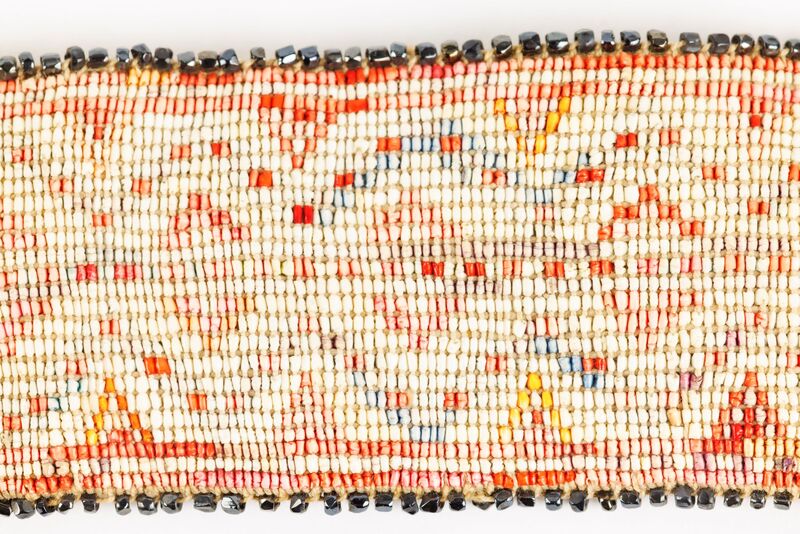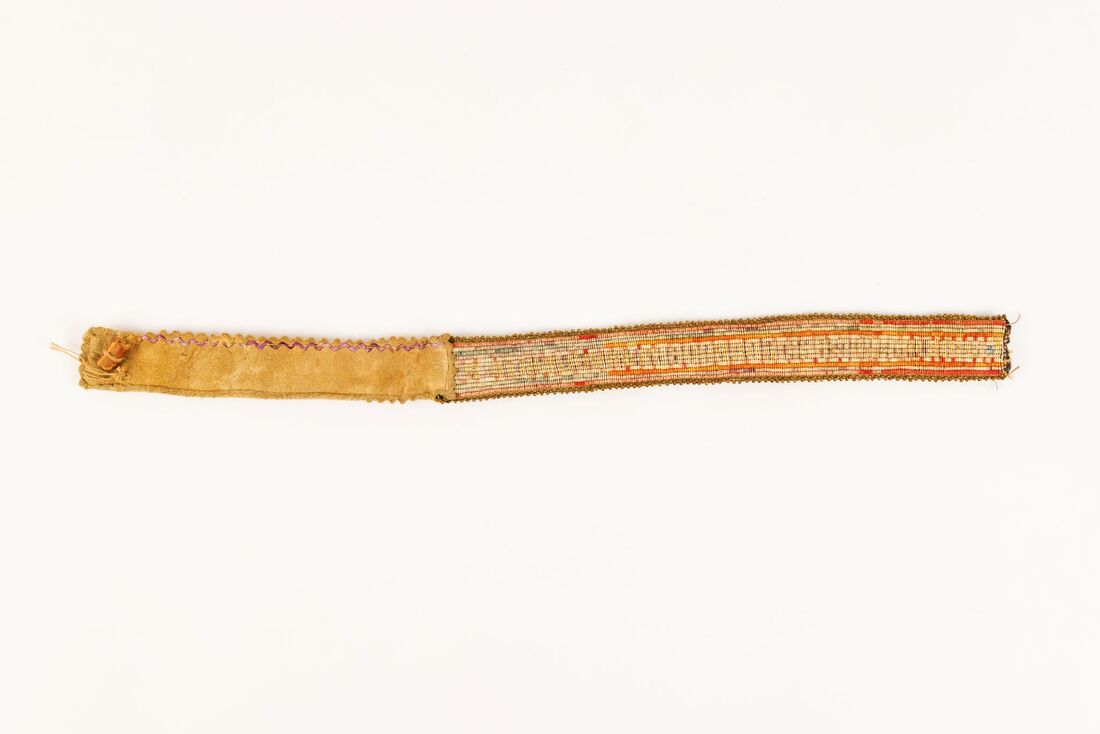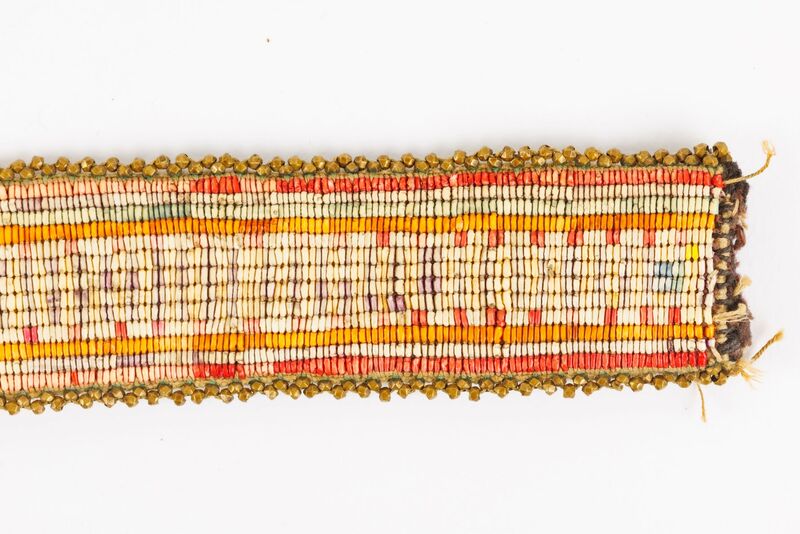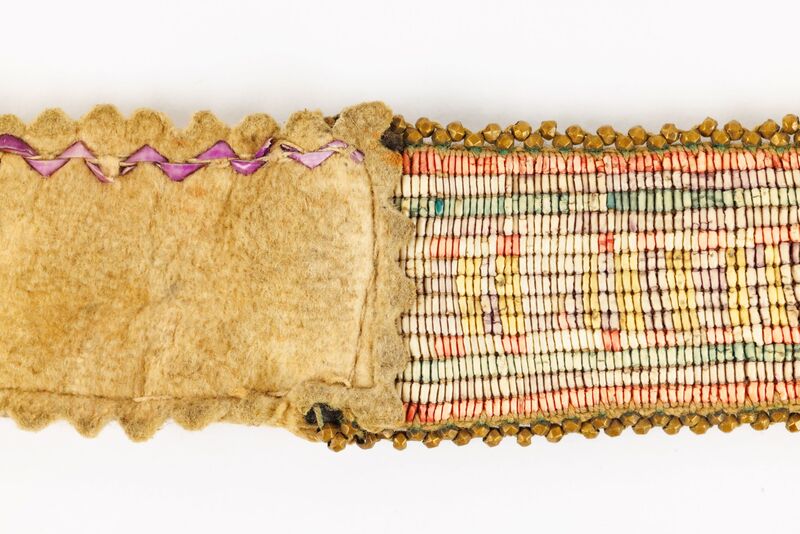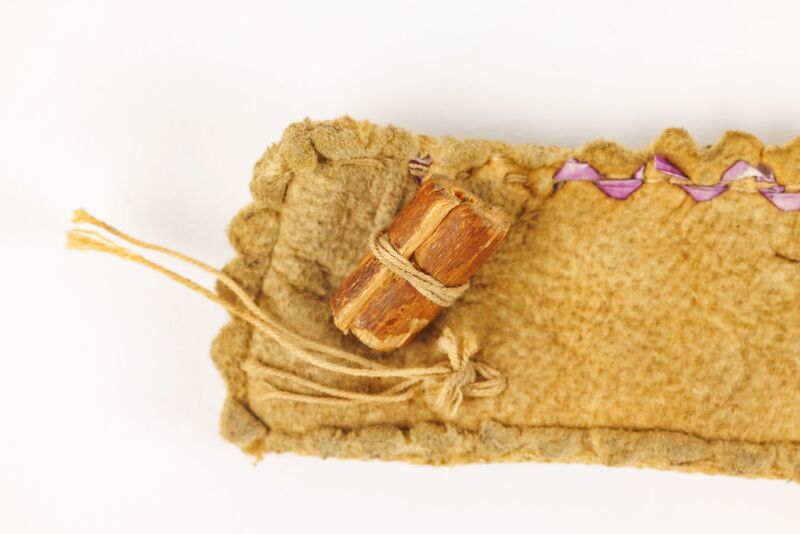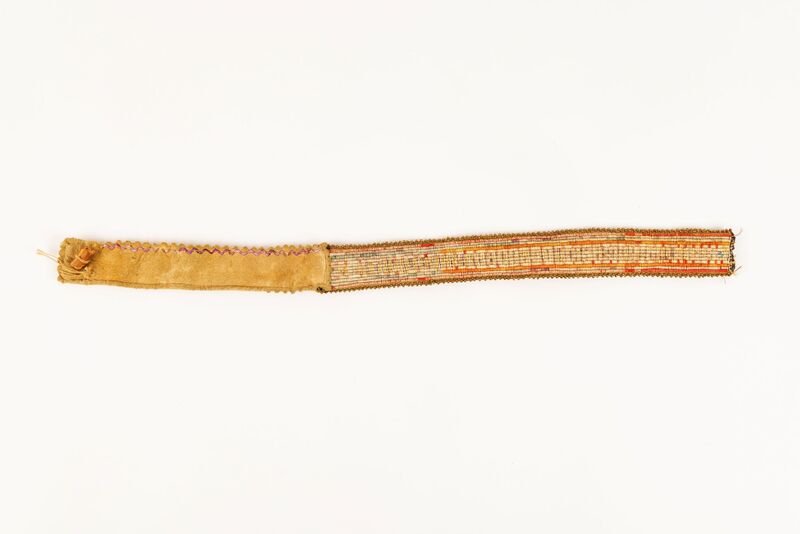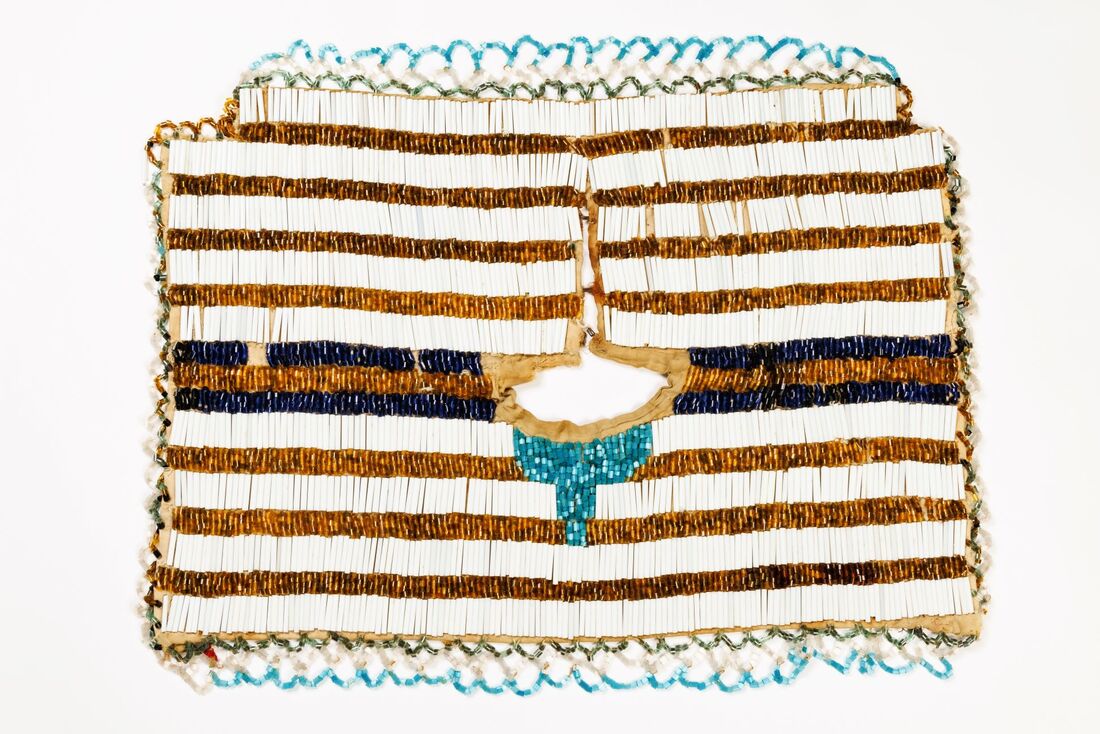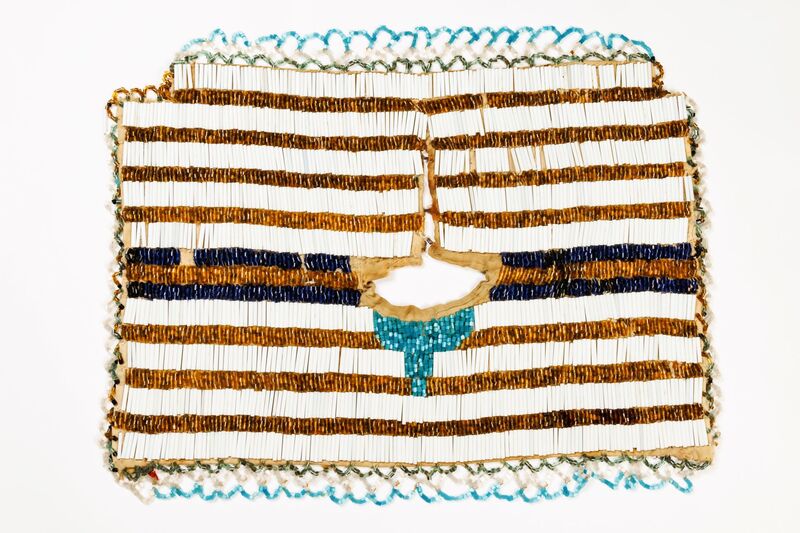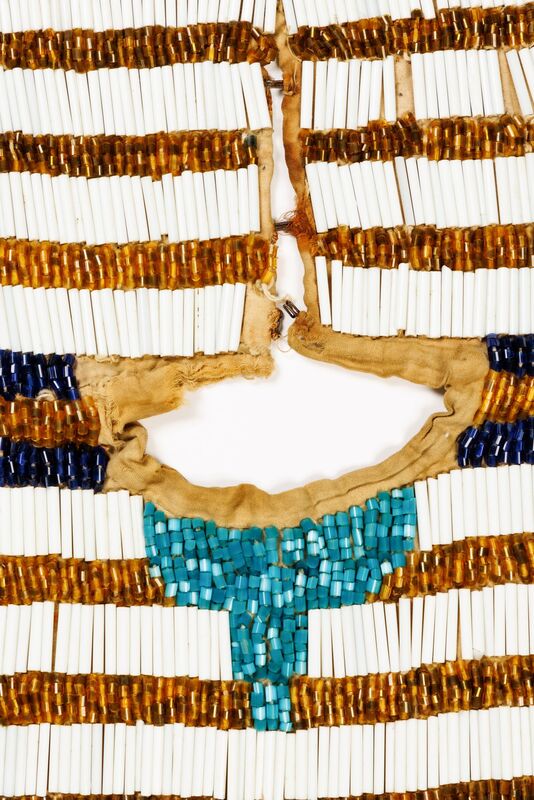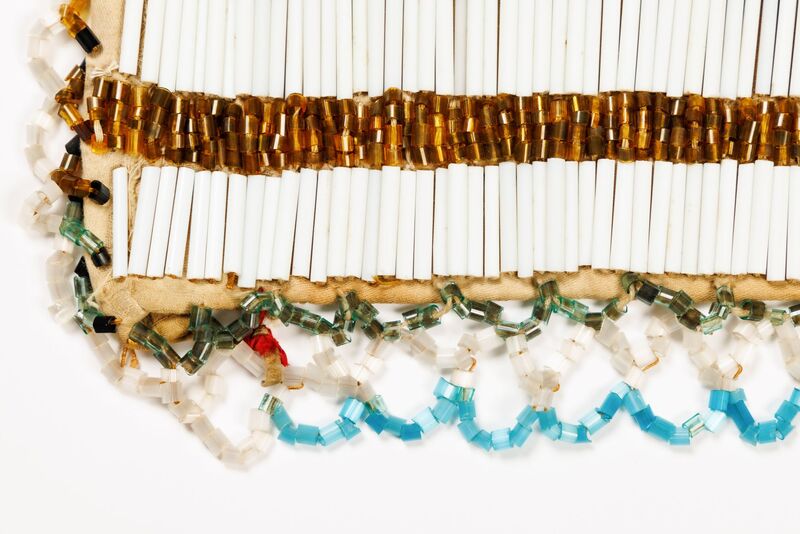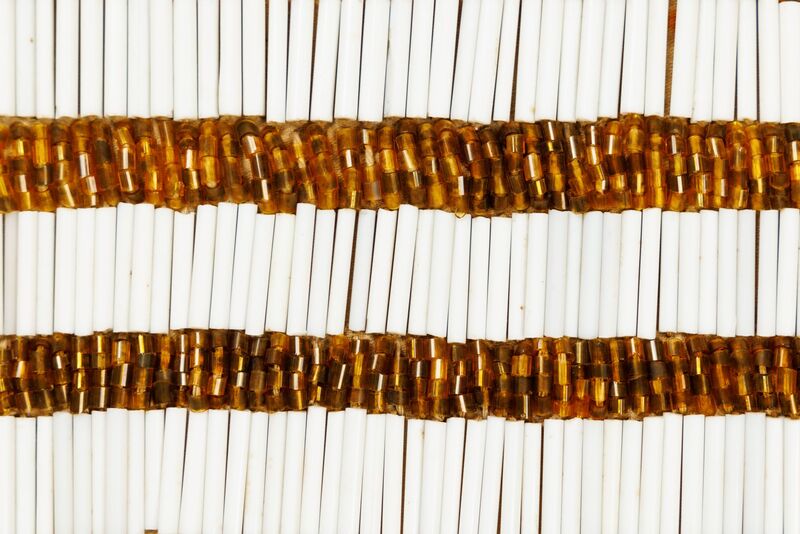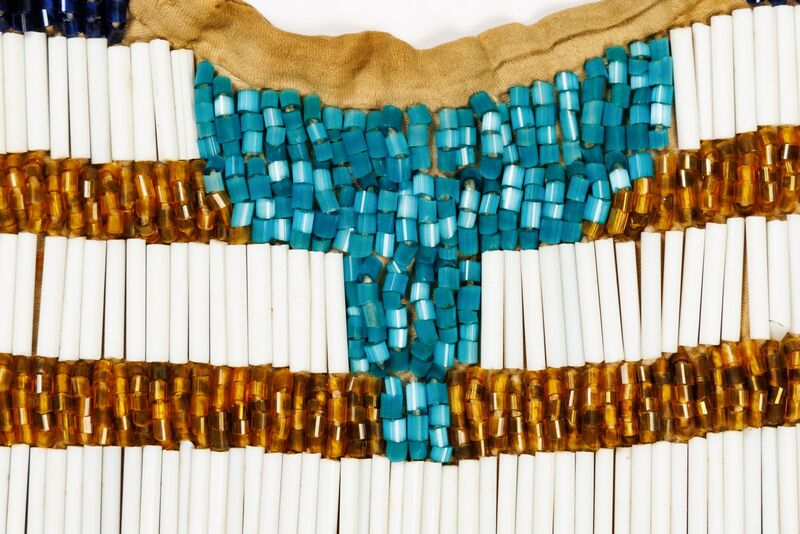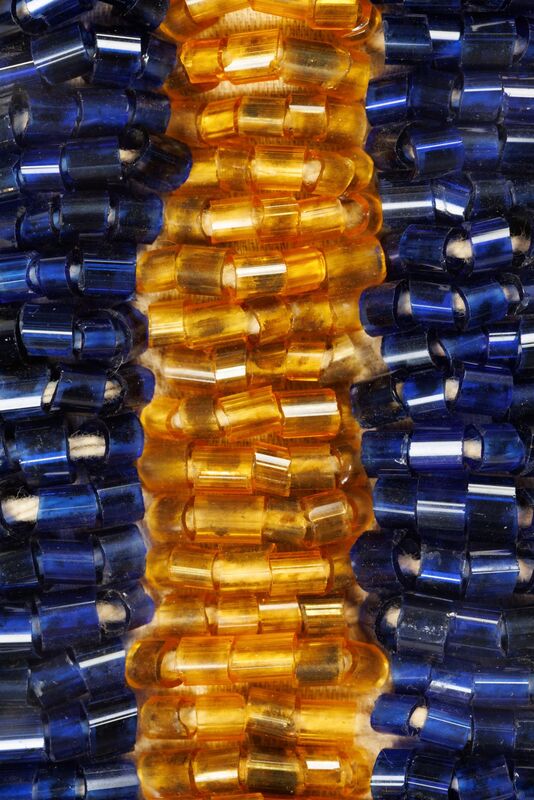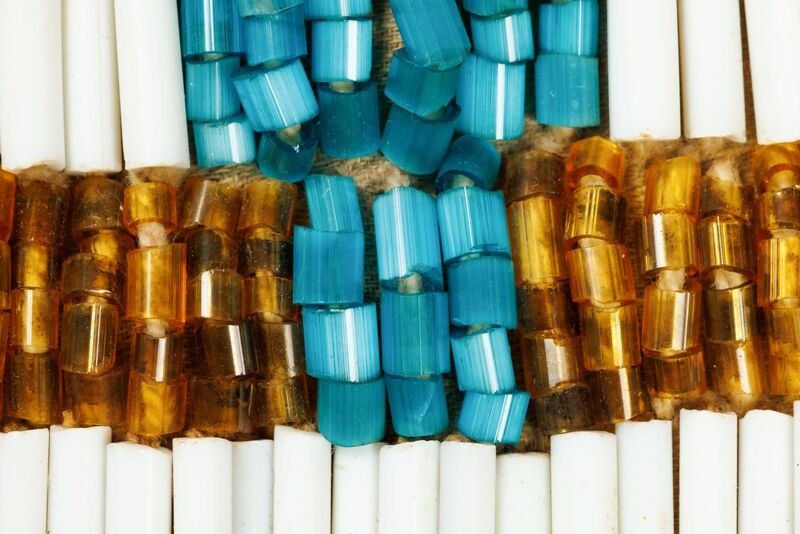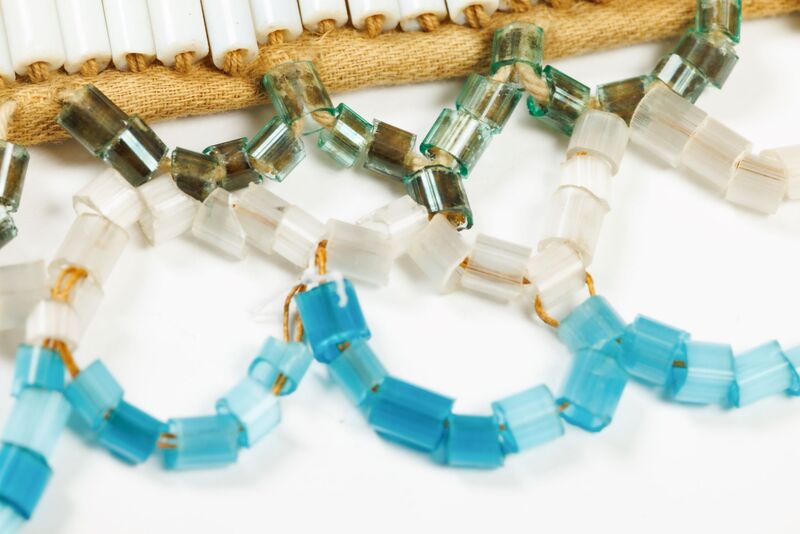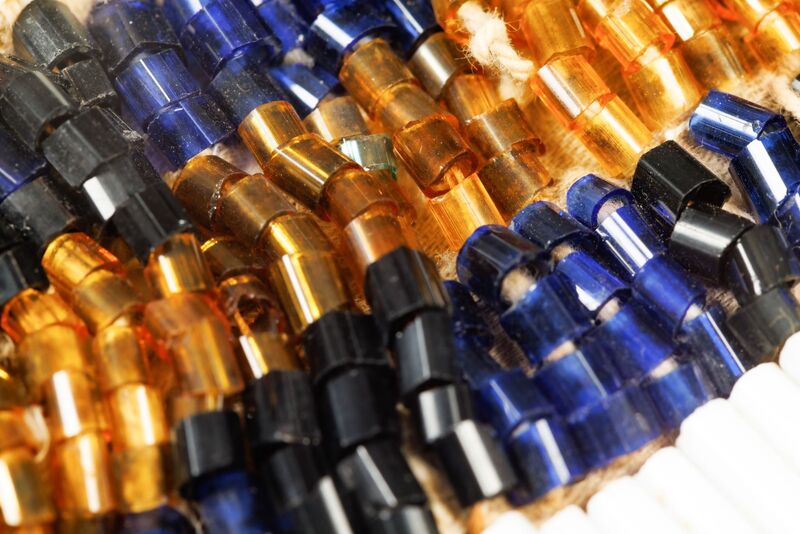Transcona Museum
|
Moccasin Vamp
Accession #: TE70.20.3 Ininiwak/Métis; Norway House or surrounding communities 1880-1900 Sun-bleached caribou hide, silk thread, porcupine quill, wrapped silk piping, ermine fur This beautiful vamp offers the most direct and disturbing example of colonial collecting we found. Its maker had incredible skills, displayed in her elaborate embroidery, quillwork, and 22 rows of patterned piping. Old museum records claim: “Moccasin was purchased from Dr. Bannerman, a well-known collector of [Indigenous] ornamental work. He paid a very old woman, reknown [sic] for her beautiful embroidery, to make a pair of moccasins. As she finished this pair, she became blind. To prevent their desecration by being worn, Dr. Bannerman slashed the backs open. He kept one for his collection, sold the other to C.H. Patterson.” “Desecration” is an ironic choice of words when he erased the maker’s name, destroyed her work’s purpose, and subjected her to a violent colonial myth so that he could sell her creations for more money. The “blind stitch” story was also used to increase the exoticism and dark value of looted Chinese textiles. Underside is labelled in blue pen: "for front of a Hand bag or on a Cushion" 21.7 cm L x 15 cm W |
|
Moccasins
Accession #: TH73.93.1-2 Métis; Great Slave Lake/ McKenzie River region c. 1910-1920 Smoked moosehide, sun-bleached caribou hide, smoked caribou hide The shape of these moccasins with their large vamp indicates a northern origin, and also suggests a slightly later date. This artist used a loose, open chain stitch to efficiently cover every available space with floral embroidery. The strawberries are a wonderful, unusual accent. |
|
Beaded Panel (Drum skirt?)
Accession #: TH99.48.58 Ininiwak/Métis; Lake Winnipeg region c. 1880 Wool stroud, glass seed beads, cotton twill, cotton print fabric The shape of this panel and its unusual fabric rosettes suggest that it may have been made to hang from the side of a drum -- a tradition known as "dressing the drum". A note with the piece reads "Mrs. Helyar". 29 cm L x 41.5 cm W x |
|
Shirt Bib
Accession #: TH99.48.61Ininiwak/Métis; Norway House or surrounding communities Smoked caribou hide, silk thread, brown paper backing c. 1880-1900 This is an incredibly ornate example of a bib (or chest panel) for a style of shirt popular in the 1880s. Buttonholes are added around the edges so that it can be moved between clothing. The Norway House style of embroidery is also based around a buttonhole stitch. The artist who made this piece had a remarkable style. Her incredibly dense, multi-layered shapes create a solid wall of moving, breathing colour. 30.5 cm L x 22.5 cm W |
|
Tobacco or Pipe Bag
Anishinaabe?; Southwestern Manitoba c. 1880-1890 Smoked deer hide, glass seed beads, silk ribbon, cotton thread This bag once had bands of porcupine quillwork wrapped around the top of the leather fringe. Old museum records state: "Held tobacco and pipe. Originally owned by Chief Chegesis who gave it to Mr. Wardrope, an early settler in Southwestern Manitoba. His son Dan, later gave it to C. H. Patterson." We can assume that the story isn’t quite true: The bag is a heavily-used item with personal, spiritual significance, and there is no known historical figure (or "chief") by this name. We have to question how items like pipe bags found their way into collections. ‘Che gesis’ is recorded in a phonetic dictionary of historical Anishinaabe names. 54.5 cm L x 14.6 cm W x |
|
Bird Skin Bag
Accession #: TE70.20.2 Sayisi Dene; Northern Manitoba c. 1900? Red throated Loon, red breasted merganser and red squirrel skins; dyed bird quills; glass seed beads; red stroud; cotton cloth The advanced tanning and sewing skills required to make this bag are truly remarkable. The artist carefully arranged each animal's pelt, sewing them together and blending the feathers with fur to build a geometric pattern. Porcupine quills are wrapped around the leather fringe, with spacer beads added below to keep it hanging flat. Bags in this style are relatively common in Dene culture, but the particular birds used here only breed in the far north of Manitoba. This bag may have special significance and requires further research. 21.5 cm L x 20.2 cm W |
|
Beaded Bag
Accession #: TH99.48.56 nehîyawak/Anishinaabe; Western Canada c. 1870-1890 Glass beads, tubular glass beads, woolen material, cotton fabric, thread, wool cord The expressive spray of flowers on this bag speaks of an artist who was experimenting. She uses a wide variety of forms and intriguing colour combinations. There are multiple styles of stitching and different techniques used to create layered edging. The wear on her bag tells us that it was well-loved and carried for years. 34 cm L x 16 cm W |
|
Gauntlets
Accession #: TE70.15.1 Western Canada c. 1870-1890 Porcupine quills, caribou hide, sinew, cotton thread This impressive yoke was made for the shoulders of a jacket. Wide lane quillwork like this is common in Siksika clothing, but the style of this piece is very unusual. The use of animal sinew to sew the quills suggests an earlier date. The artist grouped all of the designs into the symbolic numbers, 4, 5 & 7 -- suggesting a specific meaning behind the composition. 58 cm L x 9 cm W |
|
Quillwork Belt
Accession #: TE70.20.1 Dene/Métis; Northern Manitoba, Saskatchewan or Alberta c .1890-1920 Porcupine quills, hide, velveteen, glass seed beads, cotton thread This belt is badly faded, but we can still see hints of the vibrant blues, yellows, oranges and reds that would have brought this complex geometric composition to life. 71cm L x 4.5cm W |
|
Mantle
Accession #: TE70.14.1 Ininiwak?; Swan Lake region? c. 1900 Cut glass beads, tubular glass beads, cotton backing fabric, thread This mantle was probably part of regalia. The white glass tubes (called 'hair pipes') imitate the dentalium shells used in older work. One of our researchers’ fathers acquired a similar piece near Swan Lake. |
